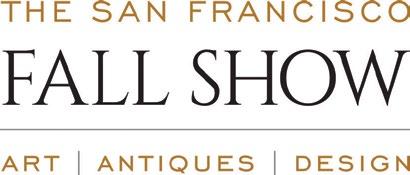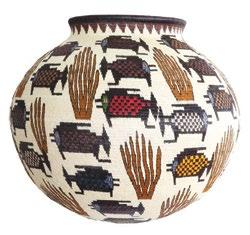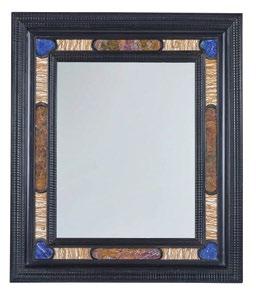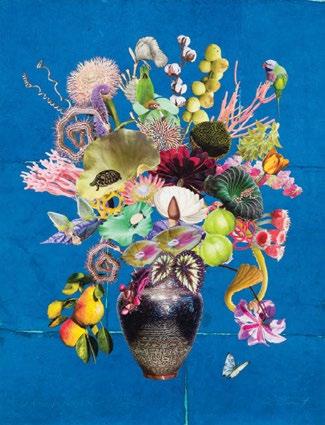

FASHION SPECIAL
ROSE BYRNE
From scene stealer to shape shifter
FRIENDS ON TREND
Thom Browne and Johnson Hartig’s 30-year bond
DREAM STATE
An exclusive excerpt of C ’s first book



























SAN FRANCISCO
BEVERLY HILLS
SOUTH COAST PLAZA




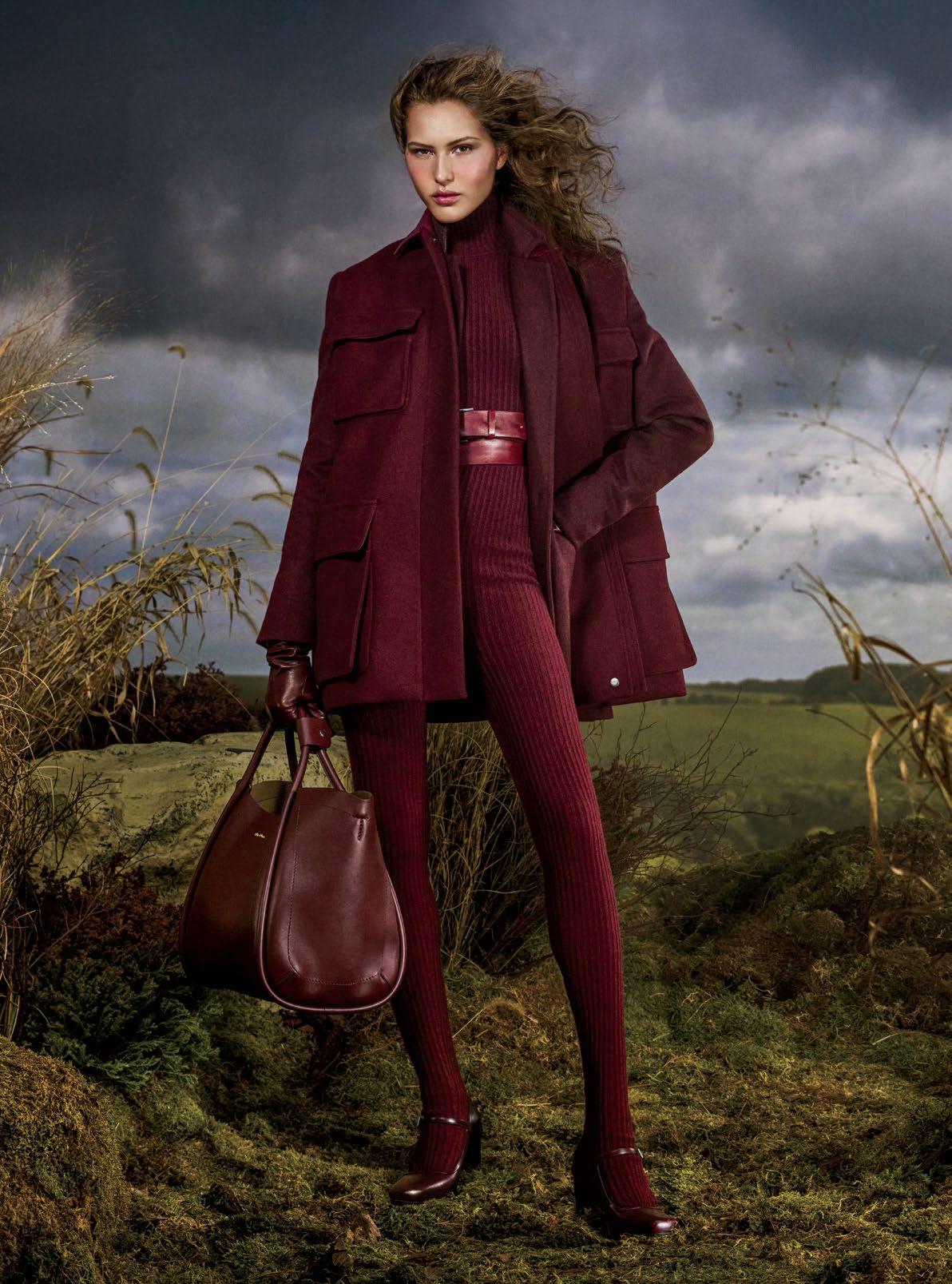
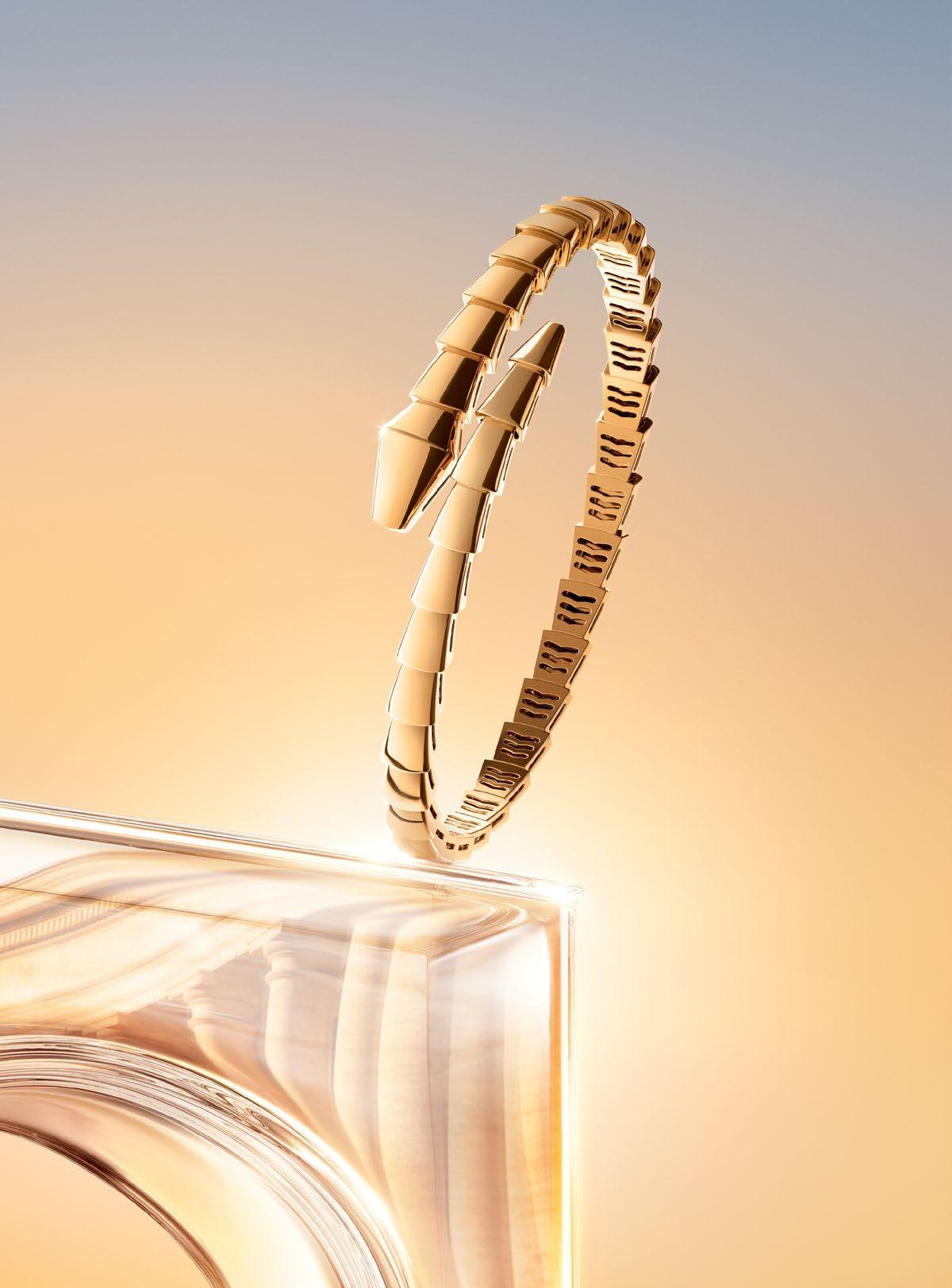
























































































































































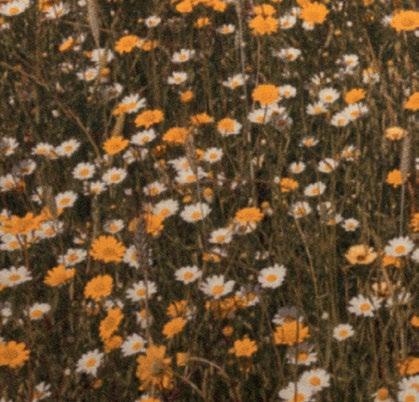
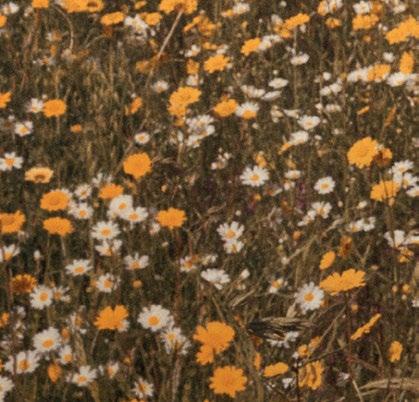

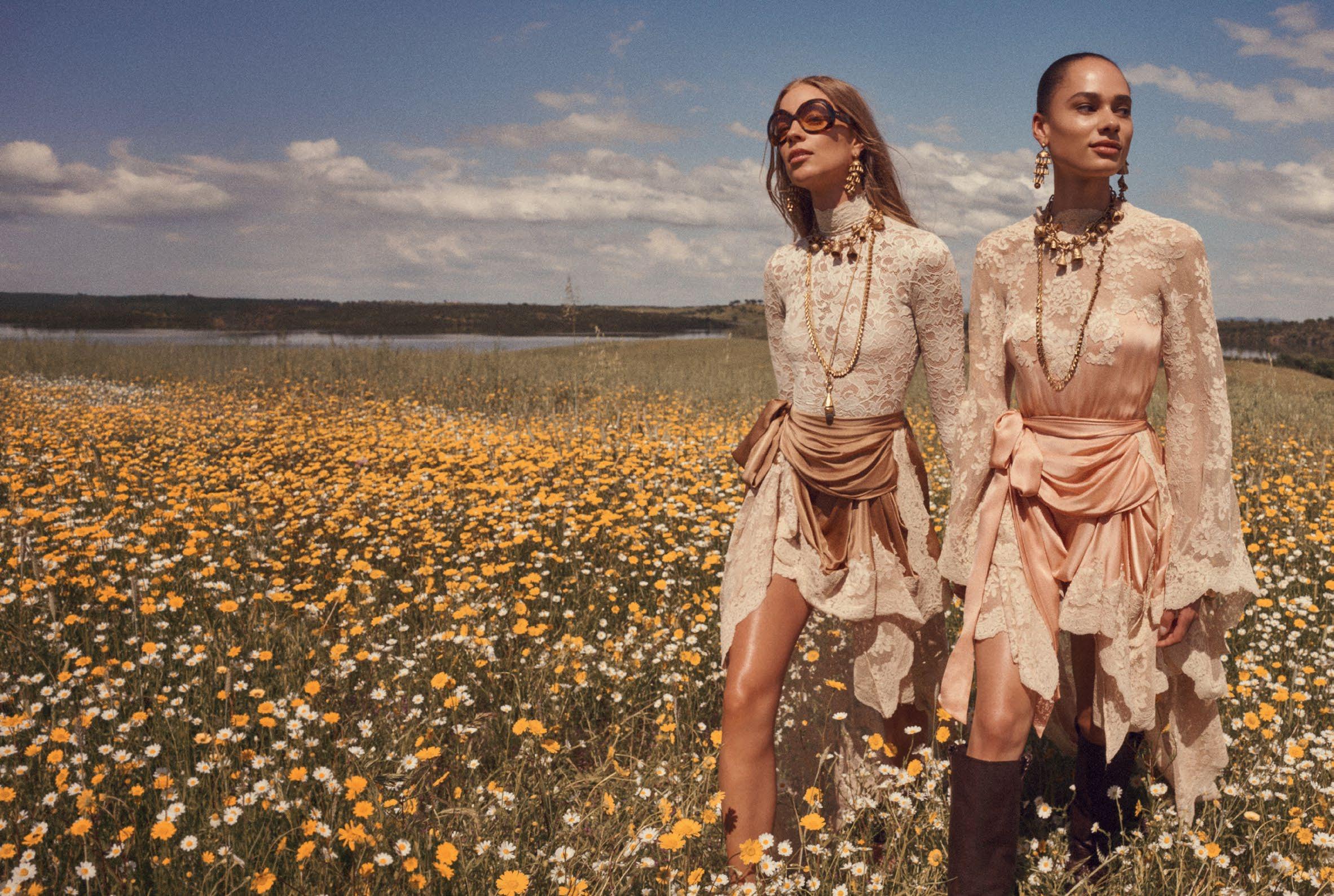

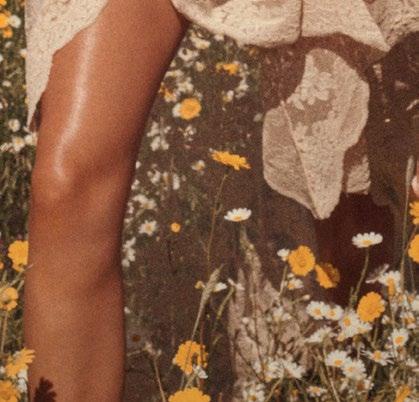









LETTER FROM THE FOUNDER
STATEMENTS
The El Roblar Hotel in Ojai is revitalized in historic Spanish revival splendor 52
CAPTURING THE ’90S
A new book from photographer Pamela Hanson distills the essence of a formidable era
56
GOODBYE SMARTPHONES
Thanks to AI agents, scrolling and searching will soon be a thing of the past
66
THE BYRNE IDENTITY
Rose Byrne reveals how she can be all things at once, in life and art 76
DREAM STATE
C Magazine’s first book covers the California escapes where its tastemakers draw their inspiration 88
GLAMOUR RETURNS
The Academy Museum is the perfect backdrop for fall’s most cinematic examples of power dressing
98
STYLE ALLIES
Thom Browne and Johnson Hartig on a 30-year friendship that began in L.A.
104
NORTH OF EDEN
Carmel Valley’s artisans prove that the richest rewards are those made by hand
114
GOLDEN HOUR
Boucheron’s high jewelry in the California desert
121
MEXICO, GO!
Four properties that nourish the mind, body, and soul
FENDI sweater, $2,650, and skirt, $24,000. BULGARI earrings, $9,400.





EXCLUSIVE
VIDEOS
The actor on green juices, cold plunges, and beating jet lag

STYLE NEWS
The hottest trends of the season



DESIGN
Haute homes from California’s foremost tastemakers


BEVERLY HILLS SOUTH COAST PLAZA THE WYNN LAS VEGAS
JENNIFER SMITH
Founder, Editorial Director & CEO
JENNY MURRAY Editor & President
Style & Content Director ANDREW BARKER | Creative & Design Director JAMES TIMMINS
Beauty Director
KELLY ATTERTON
Contributing Fashion Editor
REBECCA RUSSELL
Managing Editor
SARAH RUTLEDGE
Senior Editors
GINA TOLLESON
ELIZABETH VARNELL
Photo Editor LAUREN WHITE
Contributing Photo Editor VIVIANNE LAPOINTE
Graphic Designer DEAN ALARI
Contributing Editors: Caroline Cagney, Elizabeth Khuri Chandler, Kendall Conrad, Kelsey McKinnon, David Nash, Stephanie Rafanelli, Diane Dorrans Saeks, Nathan Turner
Contributing Writers: Anush J. Benliyan, Max Berlinger, Catherine Bigelow, Samantha Brooks, Alessandra Codinha, Kerstin Czarra, Helena de Bertodano, Richard Godwin, Robert Haskell, Martha Hayes, Rob LeDonne, Christine Lennon, Jessica Ritz, S. Irene Virbila, Chris Wallace
Contributing Photographers: Juan Aldabaldetrecu, Christian Anwander, Guy Aroch, Mark Griffin Champion, Gia Coppola, Roger Davies, Victor Demarchelier, Amanda Demme, Francois Dischinger, Graham Dunn, Sam Frost, Adrian Gaut, Lance Gerber, Alanna Hale, Rainer Hosch, Bjorn Iooss, Danielle Levitt, Blair Getz Mezibov, Dewey Nicks, Frank Ockenfels, David Roemer, Jessica Sample, Jack Waterlot, Ben Weller
Contributing Fashion Directors: Chris Campbell, Cristina Ehrlich, Petra Flannery, Fabio Immediato, Maryam Malakpour, Katie Mossman, Jessica Paster, James Sleaford, Christian Stroble, Samantha Traina
RENEE MARCELLO
Publisher
Executive Director, West Coast
SUE CHRISPELL
Director Digital, Sales & Marketing
AMY LIPSON
Sales Development Manager
Information Technology Executive Director
ANNE MARIE PROVENZA Controller LEILA ALLEN
C PUBLISHING
2064 ALAMEDA PADRE SERRA, SUITE 120, SANTA BARBARA, CA 93103 T: 310-393-3800 SUBSCRIBE@MAGAZINEC.COM MAGAZINEC.COM
SANDY HUBBARD


Elegant, beautiful, strong: that’s our cover subject, Rose Byrne — an actor, a wife, and a mother who can’t be easily summed up. Just when you think you’ve got her pegged, she swerves. She can break your heart in a dramatic close-up and then make you choke on your matcha with an arch of the eyebrow. And in the film If I Had Legs I’d Kick You — a title as delightfully unconventional as she is; watch for it this fall — she delivers a career-defining performance. But for more of her comedic masterstrokes, we have Season 2 of Platonic with her on-screen sparring partner Seth Rogen. Isn’t that the best kind of talent, when you think you know someone or something and then they surprise you with their range?
The same can be said for the great state of California. The world thinks they know us: Hollywood glamour, wellness addicts. But the truth is, we are infinitely more complicated, more layered, and more surprising. In this issue, you’ll find a first taste of our upcoming 20th-anniversary celebrations in the form of an exclusive excerpt from C Magazine ’s coffee table book with Rizzoli, California: Dream State , which will be released this fall. It’s a love letter in hardcover form in which we distill 20 years of our best stories into one volume featuring the architecture, the fashion, and the visionaries, artists, and designers who give this place its pulse, all while bathed in that inimitable cinematic light of our dear Golden State.
Speaking of visionaries, we also bring you a conversation between two fashion originals: Thom Browne and Libertine’s Johnson Hartig. They started plotting their careers 30 years ago in L.A., then zigged and zagged into wildly different aesthetic worlds. Their friendship, however, remains as sharply tailored as Browne’s suits — and as joyously idiosyncratic as Hartig’s prints. It’s a reminder that creative souls can be distinct yet perfectly in sync.
That brings me back to California, which also cannot be summed up in a single sentence. It is the total of its parts — and what dazzling parts they are. From the savage coast to the seductive cities, the fertile valleys to the enchanted deserts, there is so much to celebrate. And it’s all right here, waiting for you on these pages.

JENNIFER SMITH Founder, Editorial Director and CEO
Editors’ Picks
This month’s wish list



ELEVENTY
eleventymilano.com
On the Cover

Photography by ADAM FRANZINO. Fashion Direction by KATIE MOSSMAN.
Hair by MARA ROSZAK at A-Frame Agency. Makeup by RACHEL GOODWIN at A-Frame Agency.
ROSE BYRNE wearing ULLA JOHNSON top, $240, skirt, $1,500, and bra, price upon request.
Jacket, $3,395,
VERONICA BEARD Bag, $895, veronicabeard.com
BRUNELLO CUCINELLI Shoes, $1,670, brunellocucinelli.com
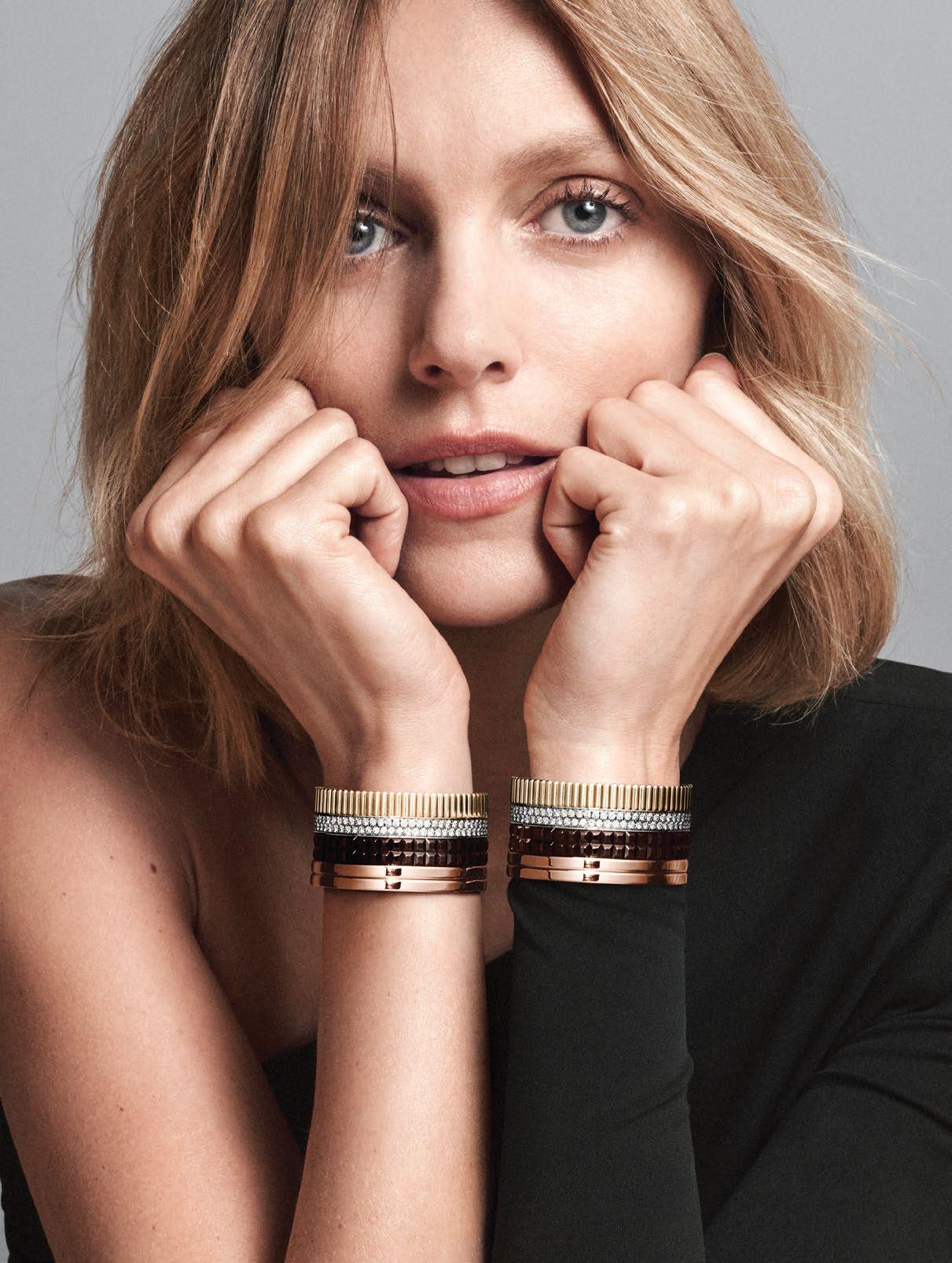
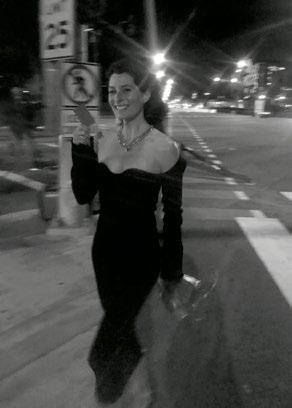
Stylist Katie Mossman — who did the fashion direction for our cover shoot on Rose Byrne, “The Byrne Identity,” p. 66 — has worked with industry legends Patrick Demarchelier, Karl Lagerfeld, and Peter Lindbergh. The New York–based creative’s work has also been seen on the pages of Elle and Harper’s Bazaar. MY C SPOTS Pierce & Ward in Los Feliz is a charming little shop • L.A. Rose Cafe in East Hollywood for traditional Filipino food • Switzer Falls trail in the San Gabriel Mountains is a gorgeous hike.
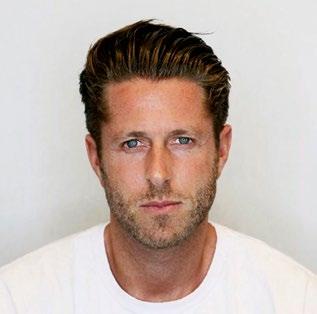
New York–based lensman Adam Franzino is known for his work with celebrities, especially portraits, and specializes in fashion, beauty, and advertising photography. Past clients include Vogue, Harper’s Bazaar, Anthropologie, Victoria’s Secret, and Hervé Léger. For this issue he photographed actor Rose Byrne for our cover and feature story “The Byrne Identity,” p. 66. MY C SPOTS The Georgian Hotel in Santa Monica is my favorite bar • The steak at Chi Spacca in L.A. is a can’t-miss • I love hiking at Point Dume.
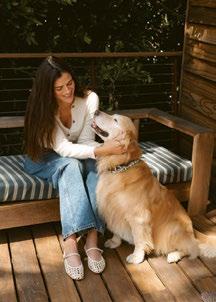
Alessandra Codinha, who penned “The Byrne Identity,” p. 66, moved to L.A. from New York four years ago. Previously she was the style director for Departures magazine, was an editor at Vogue, and wrote and edited for publications including Harper’s Bazaar and WWD She publishes a Substack newsletter, “Here We Go,” with timely fashion and culture recommendations and travel tips. MY C SPOTS Hot Jamn preserves and cookies are amazing handcrafted treats • Chainsaw opening a permanent location in Melrose Hill is good news for everyone • A Tí for delicious date nights.

Daniella Midenge is a Swedish photographer and director who opened a daylight studio in Hollywood Hills and adores a great portrait. She divides her time among L.A., New York, and Paris. Her work has been featured in Harper’s Bazaar, Vogue, Numéro, and Allure. For this issue she shot our fashion feature, “Glamour Returns,” p. 88. MY C SPOTS Dan Sung Sa in Koreatown is like being transported to Korea • Tea at Shiloh in downtown L.A. to write or get lost in my own thoughts • JF Chen in West Hollywood to admire beautiful pieces collected from all over the world.
ALESSANDRA CODINHA KATIE MOSSMAN
MIDENGE:
ADAM FRANZINO
DANIELLA MIDENGE





CONTRIBUTORS
Kerstin Czarra
Rebecca Russell
Diane Dorrans Saeks
Elizabeth Varnell
S. Irene Virbila
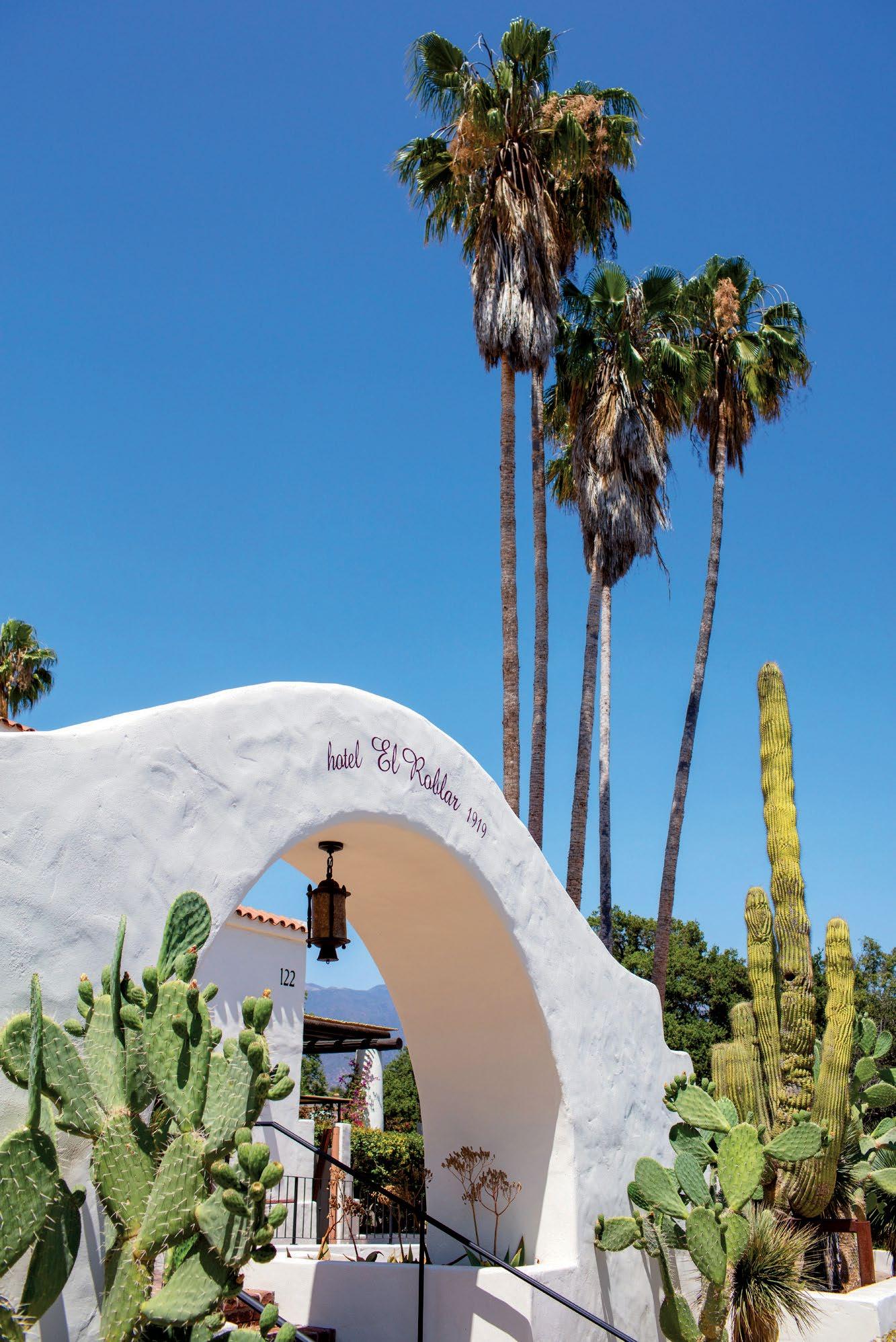
Spanish Revival Splendor
The historic HOTEL EL ROBLAR reopens
T A T E M E N T S
The Hotel El Roblar, with its Mission-style entry archway, is in the heart of Ojai.

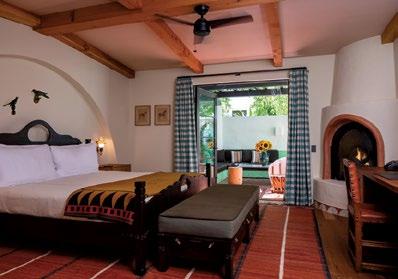

Originally opened in 1919 and shuttered to the public for nearly half a century, HOTEL EL ROBLAR has reentered the scene after a careful renovation. The lovingly restored 50-room property sits in the heart of Ojai. “It’s a 105-year-old landmark,” says co-owner Jeremy McBride, an Ojai resident who led the renaissance alongside fellow locals Eric Goode,

LUCKY NUMBER EIGHT
Ramin Shamshiri, and Warner Ebbink. A documentary filmmaker and an entrepreneur whose work spans from Tiger King to hospitality and real estate ventures, McBride adds, “We’re honored to carry it forward, hoping to restore something the community feels proud of.” The hotel is set across two lush acres and surrounded by dragon trees, tiled fountains, and towering palms. Inside, original architectural details — like the
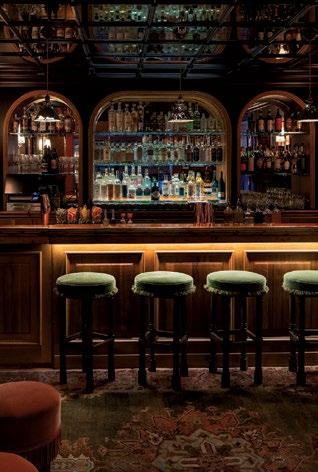
“We’re honored to carry it forward.”
JEREMY M c BRIDE
lobby’s stone-stacked fireplace and handcarved relief in the Mariposa Ballroom — have been preserved alongside newly sourced California Mission Revival and Monterey-style antiques. The hotel offers 31 thoughtfully designed rooms, many with private garden terraces. Plus, there are 11 secluded bungalows and the newly added Sycamore House, with eight cabinstyle rooms with “board-and-batten exteriors and interiors that nod to the rustic charm and craftsmanship of the property’s original outbuildings,” says Shamshiri, who oversaw the final design. 122 E. Ojai Ave., Ojai; theroblar.com. K.C.
The ethereal Australian label founded by sisters Nicky and Simone Zimmermann has made its way to Calabasas with the opening of an eighth California outpost. The ZIMMERMANN store design, a collaboration with Studio McQualter, embraces natural light as it plays off the line’s vividly colored dresses, swimwear, and accessories. Three retail rooms with mosaic-tiled thresholds include artwork by Australian painters Stephen Bird and Emily Ferretti as well as art deco armchairs and a reupholstered 1970s sofa. Inside, Fall 25 ready-to-wear embraces the vibe of the 1975 Australian film Picnic at Hanging Rock, with lace and layers of sheer organza adorning dresses. But moody leather jackets and Mongolian shearling add edge. 4783 Commons Way, The Commons at Calabasas, 747-266-1352; zimmermann.com. E.V.

Clockwise from top left: The pool has views of the Topatopa Mountains; Snug Bar offers savory cocktails; the Mariposa Ballroom is a historic event space; 11 private bungalows feature locally sourced artwork and antiques.
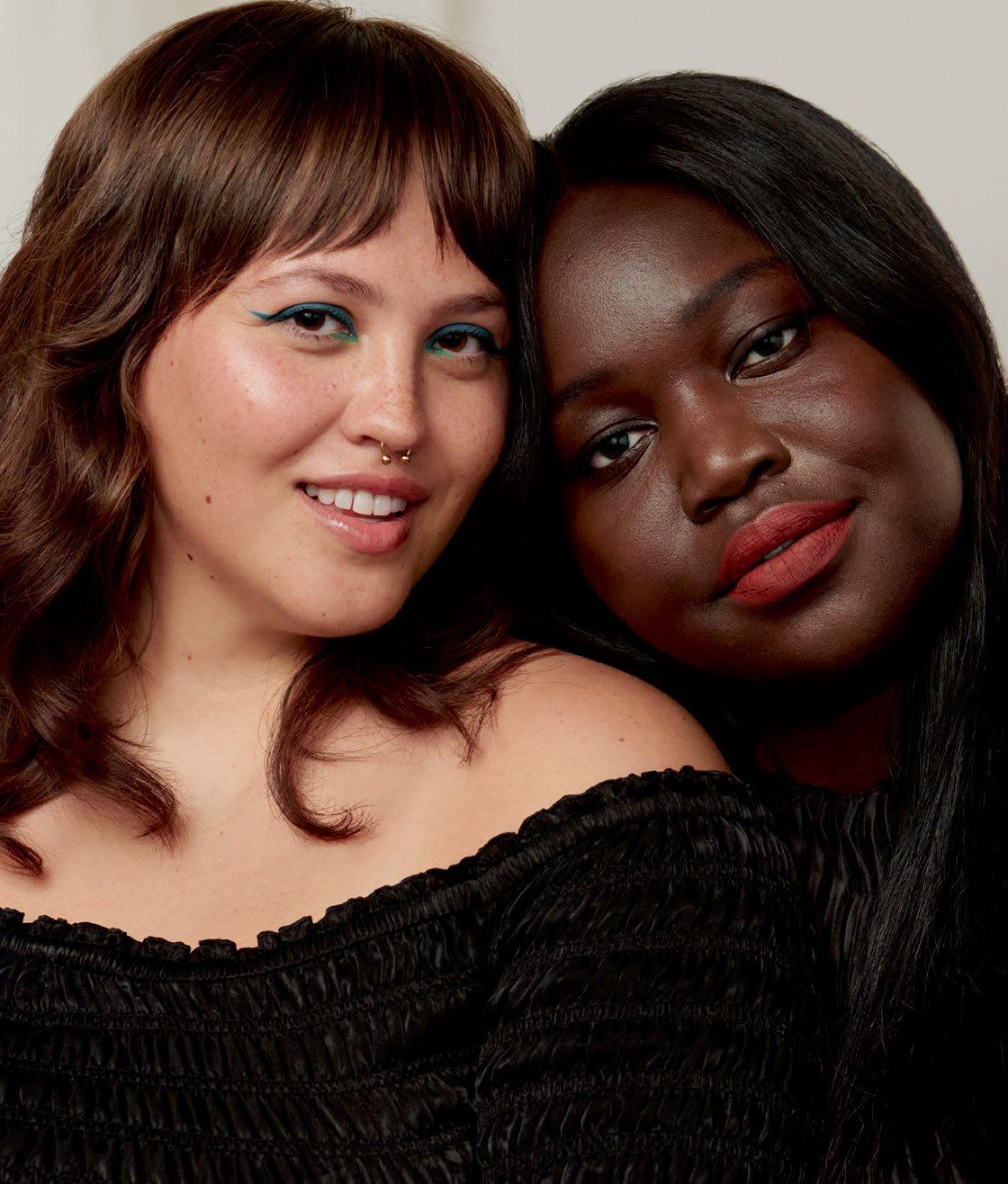

GIVENCHY’S

English fashion designer
Sarah Burton, whose lauded 26-year tenure at Alexander McQueen preceded her new role as creative director at the helm of GIVENCHY, has brought the French house back to the drawing boards. For her first collection, Fall/Winter 25, the Manchester-born designer who studied at Central Saint Martins focused on craftsmanship, cut, and stripped-back shapes. Her work was inspired by a cache of calico patterns from Hubert de Givenchy’s 1952 debut collection that were recently discovered in a hidden cupboard during a renovation of his first maison. Burton wove the imagery of brown paper



are tailored and definitively Burton’s. Shoulders are strong but also elegantly curved, there are hourglass waists, and jackets are frequently reversed. Coats have cocoon backs and bracelet-length sleeves. There are airy Chantilly lace micro-length dresses to pair with ballet flats. Knotted leather scarves reference the founder’s bows, and a white shirt, another house signature, is reworked into an asymmetrical dress. 332 N. Rodeo Dr., Beverly Hills, 213-277-2991; 3333 Bristol St., South Coast Plaza, Costa Mesa, 714-5452189; givenchy.com.

PACIFIC PALETTE
Newport Beach’s shoreside style now boasts elements of Manhattan flair thanks to a highly anticipated addition: CINQ À SEPT ’s first Golden State boutique at Fashion Island. “California has always felt like home to us, given it’s where our company began,” says founder Jane Siskin. The charming 1,200-sq.-ft. space fuses the brand’s signature peachy pink with sleek brass and wooden accents, grounding the ethereal design. The muted backdrop sharply contrasts with a display of deep denim blues and a multihued fall collection with an assemblage of separates, dresses, and footwear, plus a longawaited handbag collaboration due to be released this fall.
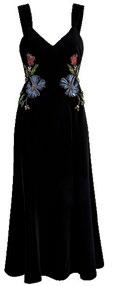
401 Newport Center Dr., Newport Beach; cinqasept.nyc. R.R.
1. Sarah Burton unveils her debut collection at GIVENCHY. 2. CINQ À SEPT opens its first California boutique at Fashion Island in


GIRLS’ BEST FRIENDS Dazzling diamond earrings
From left: BULGARI earrings, $12,900. HARRY WINSTON earrings, price upon request. TIFFANY

STAUD AND DELIVER
Sarah Staudinger, born and (mostly) raised in Los Angeles, is adding a new outpost in her hometown that’s spacious enough to showcase ready-to-wear, shoes (including a collaboration with Birkenstock), handbags, clutches, carryalls, accessories, and her sea-inspired swimwear and resort looks. Inside the new flagship, rugby stripes appear on shirts and dresses with a nautical bent, while filmy cotton poplin maxi dresses and sequined minis meant for nights on the town join sporty gear for sunrise workouts and casual pants for afternoon coffee runs. As the line — founded 10 years ago by Staudinger and George Augusto — continues to expand, STAUD ceramics and candles made especially for the boutiques are joining the in-store lineup. The new spot is also slated to be a hub for community events and home-grown launches. 8816 Melrose Ave., West Hollywood, 424-777-0090; staud.clothing. E.V.
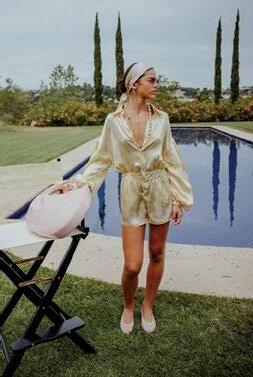
HORSING AROUND
CHE BELLA
GENNY creative director Sara Cavazza Facchini credited L.A. as the inspiration for her Cruise 2026 collection, shown on the lush lakeside lawns of the Casa Lago villa in Beverly Hills. Structured cocktail dresses, dreamy flowing pants, and shorts with fluid silhouettes in a lime-toned interpretation of the Italian house’s distinctive orchid print join evening gowns in white, black, or delicate pastel shades. Jeweled jeans and rhinestone tassels add an eye-catching vintage aesthetic to the bevy of looks. Daywear designs are equally suited for lunch in the city or a beachside evening with the rolling waves of the Pacific Ocean nearby. The made-in-Italy silhouettes of silk, light muslin, and structured drill are all newly interpreted through a decidedly Californian lens. 9536 Brighton Way, Beverly Hills, 310-734-7115; genny.com E.V.
Inspired by the elegant equestrian world, horse enthusiasts, and a heritage emblem, GUCCI is adding new fine jewelry designs to its Horsebit collection. The motif first appeared in the late 1940s as a sketch in a house artisan’s notebook. Soon afterward, loafers and accessories adorned with the riding symbol emerged, followed by bracelets and watches in the


HYBRID HYPE
As part of BALENCIAGA ’s Winter 25 collection — the penultimate offering by Demna — the luxury fashion house has unveiled an eagerly awaited partnership with PUMA . The thoughtfully crafted assortment of footwear and ready-towear is a harmonious blend of cutting-edge aesthetic and athletic, fashionforward designs. Originally released in 1999, the iconic Puma Speedcat flat-sole sneaker makes a reinterpreted comeback with signature Balenciaga elements like destroyed detailing and a socklike formation. Also on offer are fitted and oversize hoodies, T-shirts, and shorts adorned with cobranded graphics, plus including technical terry deceiving suede bathrobe. 338 N. Rodeo Dr., 310-854-0557; balenciaga
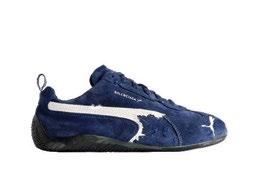
1. Visit the
1970s. Now the house is adding white gold necklaces with pendants in diamond demi pavé, cuff bracelets with a single version of the symbol, and a double chain bracelet complete with a charm. Modern hoops and an ear cuff are also included. Yellow gold chokers have Horsebit elements, plus a bracelet, ring, and earrings riff on a similar chain effect. Stylish fans will be champing at the bit. gucci.com. E.V.
new STAUD flagship on Melrose Avenue. 2. BALENCIAGA x PUMA Speedcat sneakers, $685. 3. Catch the Cruise 2026 collection from GENNY. 4. GUCCI Horsebit ring, $4,750.

WELLNESS: WEST HOLLYWOOD STYLE
For world-leading treatments and pioneering movement classes, head to WeHo
In West Hollywood, living well isn’t a trend — it’s baked into the city’s DNA. This 1.9-square-mile vortex of L.A. is packed with serene escapes and positive energy. Morning reformer classes, midday infrared sauna sessions, and sunset rooftop yoga or pickleball classes are available for travelers seeking out the neighborhood’s UV wellness spring. WeHo has been leading the wellness movement from a concentrated footprint for decades. Barry’s launched its first HIIT classes here more than 25 years ago, and Ole Henriksen’s spa turned the celebrity facial into an A-list essential long before self-care went mainstream.
That innovative spirit continues to thrive. In September, a celebration of wellness highlights both the iconic and the latest trends in wellness, including longevity trends at Remedy Place, where they reimagine recovery as a social experience with sleek ice baths and hyperbaric lounges, and Next Health, which introduced biohacking and red light bathing into the global zeitgeist. It’s why New York’s cult-favorite Dogpound, or Spencer’s Spa — a design-driven sanctuary for facials and massages — selected West Hollywood for its West Coast flagship. Meanwhile, celebrity studios continue with Kinrgy, Silver Springs, and the latest offering, Strong Pilates — all of which keep the city moving ever closer to finding your eternal glow.
Simply put, there’s no place on the West Coast like WeHo to care for your mind and body in an urban setting. September’s Mind+Body Month bundles the city’s signature experiences — fitness classes, spa treatments, and recovery rituals — into exclusive offerings across dozens of venues so you can sample it all. visitwesthollywood.com
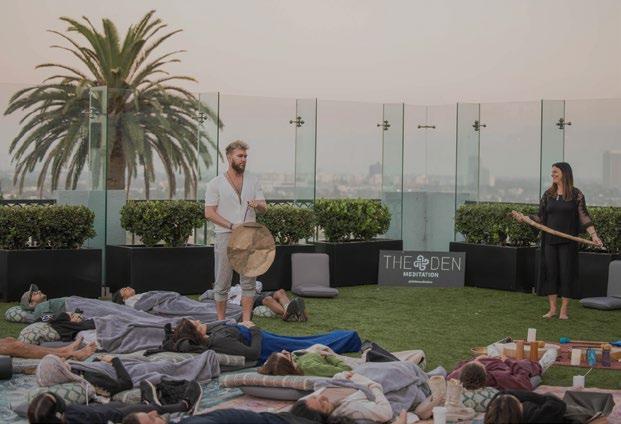


Clockwise from top left: Refresh in The West Hollywood EDITION’s sauna and steam; meditate with The Den at The London; plunge into the pool at the 1 Hotel; kick back at The Sun Rose Hotel (formerly The Pendry).

Photography by BRAD TORCHIA Styling by REBECCA RUSSELL
JIMMY CHOO Bar Hobo S bag, $1,595, and Isa 80 shoes, $1,295.


From top: GUCCI GG Marmont bag, $2,600. BOTTEGA VENETA Andiamo bag with chain, $4,800.


From top: SAINT LAURENT BY ANTHONY VACCARELLO Baby Icare bag in lambskin leather, $2,900. MAX MARA Whitney bag, $2,690.


From top: HERMÈS Mallette bag in box calfskin, $28,300. VALENTINO Garavani Nellcôte mini tote, $1,980.
SOUTHERN CALIFORNIA’S ULTIMATE SHOPPING DESTINATION
ALAÏA
AMIRI
BALENCIAGA
BOTTEGA VENETA
CARTIER
CHANEL
CHRISTIAN LOUBOUTIN
DIOR
DIOR BEAUTY
DOLCE&GABBANA
ERES
FENDI
FERRAGAMO
GIORGIO ARMANI
GUCCI
GUERLAIN
HARRY WINSTON
HERMÈS
JACQUES MARIE MAGE
JIMMY CHOO
KHAITE
LOUIS VUITTON
MAISON MARGIELA
MAX MARA
MONCLER
PRADA
ROGER VIVIER
SAINT LAURENT
STELLA M c CARTNEY
TIFFANY & CO.
VALENTINO
VAN CLEEF & ARPELS
partial listing
Valet Parking · Personal Stylist Program
Gift Cards · Concierge Services
COSTA MESA, CALIFORNIA

When Fashion Ran Free
Photographer PAMELA HANSON revisits her quintessential ’90s images

There was so much freedom. We traveled for weeks…we ran around on the streets, we had time to create ideas and bring them to life,” says PAMELA HANSON , describing the fashion editorials she shot in the 1990s. It was a decade when the photographer — whose work has appeared over the past 30 years in Vogue , Harper’s Bazaar , and C , among other publications — trained her lenses on some of fashion’s most recognizable faces. Now she has compiled era-defining images, outtakes, and behind-the scenes moments in a new volume, Pamela Hanson: The 90s (Rizzoli, $85).
Words by ELIZABETH VARNELL


The monograph arrives following a spate of titles chronicling the glamourous milieu of magazines and models from which these photographs emerged, including former Vanity Fair editor Graydon Carter’s memoir, When the Going Was Good, and Michael M. Grynbaum’s recent history of Condé Nast, Empire of the Elite. “I remember just total creativity from everyone: designers, models, magazines,” Hanson says. Her documentary-style work shifts the focus back to the models themselves, honing a unique gaze that captured the spirit of the decade along with the often-minimalist designs they wear. “I love and respect these girls so much and wanted them to feel comfortable and to show their personalities,” she adds.

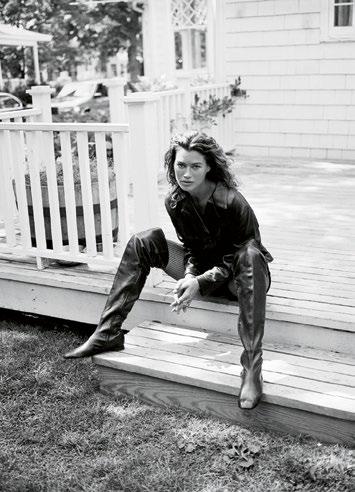
Hanson, who grew up in Switzerland (alongside best friend Lisa Love, the longtime West Coast director of Vogue and Teen Vogue who penned the book’s foreword), began taking photographs in her teens. When she moved to Paris in 1980 at age 26, Hanson was shooting intimate portraits of friends and built a darkroom in her bathroom for the mostly black-and-white images she favored. Many pictures in the new volume are set there, but she preferred the West Coast for summer collections (shot during the frigid winters in Paris and New York). “California was always my first choice — the climate is perfect, and so is the landscape, so much diversity of options,” Hanson says. There’s Eva Herzigová at a sunny L.A. racetrack. Angela Lindvall and Sebastien Triel leap for a shot across a Palm Springs tennis court. Trish Goff and Carolyn Murphy stroll along a Beverly Hills sidewalk.
Sofia Coppola sees a relaxed intimacy in Hanson’s images, noting there’s a feel of girls lensed by another girl. “I often get asked if I think being a woman makes a difference when shooting,” Hanson says. “And of course I don’t know anything different, so I can’t really say.” But, she says, her shoots in this era often felt like a gathering with girlfriends. “Personally, I want to know them, to make them feel comfortable so they can be themselves.” •
“California was always my first choice — the climate is perfect, and so is the landscape.”
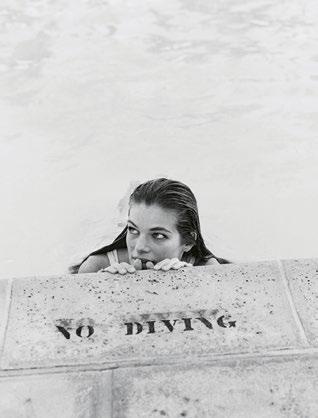
Clockwise from opposite: Pamela Hanson’s portraits of Patty Sylvia and Paul Coster; Christy Turlington; Milla Jovovich on the book cover; Cordula Reyer; Carré Otis; Tyra Banks.
DYSTOPIAN DREAMS

LAWRENCE LEK’s cinematic universe has arrived in L.A., and he has trained his eye on both the alluring promise of AI and the inherent ethical twists as the technology extends its reach in our automated age. Lek, a Malaysian Chinese artist who is based in London, has installed the immersive Lawrence Lek: NOX High-Rise multigallery show at the HAMMER MUSEUM. The exhibition, which spans narratively linked videos, sounds, and objects, builds on his concept of a Sinofuturist universe exploring parallels between AI and Chinese technological developments combining science fiction, documentary, melodrama, social realism, and Chinese cosmologies. Sentient self-driving cars in need of mental health treatment — a glimpse of the future, or just a game? 10899 Wilshire Blvd., L.A., 310-443-7000; hammer.ucla.edu. E.V.

DESIGN ILLUMINATED
LUMENS, the online design destination long favored for its sharply curated mix of modern lighting, furniture, and decor, has opened its first showroom in San Francisco’s Jackson Square. The 4,200-sq.-ft. shop brings together more than 400 global brands — like Flos, Louis Poulsen, and Glas Italia — alongside standout California talents, including Yves Béhar and Mandy Cheng. The store includes a street-facing space known as The Gallery, a rotating showcase for experimental design and creative dialogue. “The space will allow our community to engage with the brand and product catalog in ways that were not possible before,” says CMO Dana Gers. 724 Battery St., S.F.; lumens.com K.C.
SHAPE SHIFTER
Generational Italian design mainstay MINOTTI , the innovative furniture flagship that Mary Ta brought to West Hollywood 20 years ago, is beginning a new chapter with a remodeled exterior and interiors filled with the latest collections. There are modular pieces by Giampiero Tagliaferri combining 20th-century Italian design with

FULK’S FINDS
For more than two decades, San Francisco designer KEN FULK has been admired for the exuberance and theatricality of his decor. Fortunate Fulk fans can now acquire colorful works by his favorite artists, along with vintage furniture and lighting, in his new shop on the atmospheric ground floor of his century-old headquarters. His far-flung happy hunting grounds for the rare and beautiful include the Paul Bert Serpette flea market in Paris, plus secret sources in Pimlico, London; Round Top, Texas; and L’Islesur-la-Sorgue in the South of France. “I’ve been a passionate collector of vintage and antique furniture, ceramics, and spectacular art for decades, and I wanted to share some of my trophies with friends, clients, designers,” Fulk says. 310 7th St., S.F., 415-2851164; kenfulk.com. D.D.S.

Southern California modernism. Oki Sato, of the Japanese architecture and design studio Nendo, created sofas designed in different depths as a family of seats. Hannes Peer’s marble coffee tables and consoles are also here, as are GamFratesi sculptural armchairs by the Copenhagen-based duo Enrico Fratesi and Stine Gam. 8936 Beverly Blvd., West Hollywood, 310-278-6851; minotti.com. E.V.
1. LAWRENCE LEK peers into the future at the HAMMER MUSEUM. 2. LUMENS has opened its first showroom in San Francisco.
3. Shop KEN FULK’s favorites. 4. Visit the remodeled MINOTTI in WeHo.
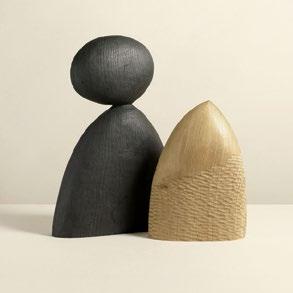
ARTISANAL ODYSSEY
San Francisco–based designer Nicole Hollis, known for her bold, artdriven interiors, is launching NICOLEHOLLIS COLLECTION , a limitededition line of textiles, tabletop, decor, and scents created in collaboration with 23 artists across the globe. Each of the 160 pieces is specially commissioned and exclusive to the offering: sculptural lava ceramics by L.A.based Caroline Blackburn, horsehair and leather pillows by equine artist Alexandra Kohl, custom brass tea caddies from Kyoto-based Kaikado, wool textiles from Madda Studio in Oaxaca, and coffee and pepper grinders by Michael Anastassiades (previously available only at The Row). The assortment reflects a deep commitment to curation, craftsmanship, and global artistry. nicoleholliscollection. com. K.C.

1, 2. NICOLE HOLLIS collaborated with 25 artists worldwide for her new collection.
3. Design a LOUIS VUITTON home with everything from vases to pinball machines.
4. SFMOMA welcomes SHEILA HICKS.

MAISON MODERNE
Rooted in travel, Louis Vuitton’s wide-ranging embrace of design includes ready-to-wear, accessories, bags, and limitededition Objets Nomades chairs, lamps, and tables. Now the house is expanding further into living spaces with the launch of LOUIS VUITTON HOME COLLECTIONS . Modular sofas, buffets, and dining tables in leather, onyx, and precious woods, plus an armchair and decorative trays and vases by Patricia Urquiola, join lamps by Atelier Biagetti, graphic textiles, ceramics by Jaime Hayon, and Limoges porcelain from the Japanese design studio Nendo. There are even game room additions, such as a pinball machine inspired by Pharrell Williams’ Fall/Winter 25 show, a mah-jongg set, and a pastel reinterpreation of table football designed by Estúdio Campana in Brazil. louisvuitton.com E.V.
MATERIAL WORLD
SHEILA HICKS is bringing her singular vision and brightly colored threads to SFMOMA , where she’s created a site-specific commission taking inspiration from lighthouses guiding ships on the island of Ushant in western France. New Work: Sheila Hicks includes a hanging fiber piece to light the way, a bas-relief sculpture, small-scale works, and a series of wrapped beacon panels, plus a convergence of older and newer pieces. The Paris-based artist, known for the sculptural textile and handwoven works she’s made for more than six decades, has also been on the fashion radar with pieces installed at Loro Piana’s Beverly Hills boutique and a reimagined Lady Dior bag for Jonathan Anderson’s runway debut at the French house. Additionally, the gallery exhibition — her first solo show at the museum — runs in tandem with Hicks’s not-to-be-missed outdoor commission in the sculpture garden. Through Aug. 9, 2026. 151 3rd St., S.F., 415-357-4000; sfmoma.org E.V.


GOODBYE SMARTPHONES

The biggest pop princess strides on stage at Coachella, and the crowd goes wild. The vibes are high, the atmosphere is electric, but something feels different. It’s the year 2030, and adoring fans are not holding up their phones to record every twerk and top C note, as they have for nearly a quarter century. Instead, they’re wearing augmented reality spectacles that are recording the moment for posterity. Some sport quarter-size pendants around their necks that light up as
their artificial intelligence assistants communicate via earbuds.
After the concert, fans stream to the nearby skyport, where — after speaking their boarding pass codes, delivered by said assistants — they step into driverless electric air taxis that ferry them 120 miles from the desert to Los Angeles in 20 minutes.
Fanciful? It may not be that far off. The dawn of the AI revolution has set in motion a frenzy not seen since the dot-com boom of the late 1990s. And the biggest beasts in Big Tech and start-ups have set their eyes on a new
prize: inventing the transformative device of the AI age — one that will kill the smartphone, years after Steve Jobs introduced the iPhone in 2007.
The underlying conceit is that AI is a fundamentally different type of technology that makes possible — even necessitates — a different type of device. In an age of AI that can understand the world and respond in natural language, is hunting and pecking on a handheld black rectangle the best we can do? Do we even need a screen if we can simply talk to and be understood by our device? Can we remediate some of the societal

damage generated by our obsession with our smartphones?
The industry is actively hunting for this white whale. Mark Zuckerberg is reportedly offering top AI engineers $100 million to work at his new superintelligence lab. Meta has plowed billions of dollars into Ray-Ban–designed AI glasses that project digital information onto the real world, embedded with a conversational assistant and temple-tip speakers that approximate the effect of earbuds. Zuckerberg rarely makes a public appearance without donning a pair.
Alphabet still bears the scars from Google Glass, the tech-enabled spectacles it rolled in 2012 to universal derision. Its wearers were dubbed “Glassholes,” and the product was swiftly discontinued. Yet the company announced in 2024 that it was working on a new line of AI-enabled spectacles that will be “glasses you’ll want to wear.”
Perhaps most eye-catching, Sam Altman, the billionaire cofounder of ChatGPT developer OpenAI, and Jony Ive, Apple’s billionaire former designer, announced in May that OpenAI was swallowing Ive’s year-old design firm, io. Under the deal, Ive joined ChatGPT as a hardware designer.
The mandate for tech’s most famous product mind — Ive designed the iPhone and once called Steve Jobs his “spiritual partner” — is to create a “family of devices” that will reimagine how to use technology in a world upended by AI.
Ive’s team has already created a prototype, which could be unveiled next year. Altman said, “Jony called one day and said, ‘This is the best work our team has ever done.’ I mean, Jony did the iPhone. Jony did the MacBook Pro. These are the defining ways people use technology.… Jony recently gave me one of the prototypes of the device for the first time to take home, and I’ve been able to live with it. And I think it is the coolest piece of technology that the world will have ever seen.”
Both have kept mum on what the new gizmo will look like. Speculation is that it may be screenless, voice controlled, and “contextually aware.” Om Malik, a tech investor and commentator, said, “You can’t deny that we are living in a moment of incredible innovation and reinvention because of AI. And just as the iPhone 18 years ago reimagined the phone, the PC, the camera, and the consumer electronics industry into one device, it feels like we are at a similar inflection point.”
All of which makes Apple’s predicament even more perplexing. While rivals scramble, the Cupertino giant has meekly rolled out Apple Intelligence, an AI system that was meant to integrate AI into all aspects of its devices. It has been virtually imperceptible to users. When it has shown up, it often makes mistakes, like providing erroneous summaries of current events.
Ben Thompson of Stratechery, the specialist tech publisher, dubbed Apple’s strategy a “heads-in-the-sand failure.” He said Apple risks being left behind amid damning reports of company executives dismissing the technology: “The biggest lesson of the
“Just as the iPhone reimagined the entire consumer electronics industry into one device, it feels like we are at a similar inflection point.” OM MALIK
last few years is that the best time for the company to take AI seriously was years ago.” Apple, he said, may be forced to break the bank and acquire a leading AI lab to get back in the race.
Start-ups, meanwhile, are also having a go. Dan Siroker is a cofounder of Limitless, which has developed a circular pendant — about the size of a quarter — that is an always-on, AI-enabled listening device. Users can clip it to a lapel or wear it as a necklace. The idea, Siroker says, is to effectively turn one’s entire life into a searchable archive. Or, as the company tagline says, “to free the human mind from its biological limitations.”
The pendant listens and transcribes everything its wearer says — and everything said to them — all day, every day. Its AI then analyzes all these interactions and sends push notifications about how the wearer can improve as a colleague, a partner, or a parent. “It’s a life coach. It’s a work coach. If you just look at one day of your life and you could ask AI what you could do better, you’d be shocked at what to come up with. And you know, it’s not for everyone. Not everyone wants to be better in life. But if you do, this is magic,” Siroker says. “My kids are happy I wear the pendant because it makes me a better dad.”
A challenge for Limitless — and for Ive and Altman if they pursue a device that is, as rumored, “contextually aware” — is privacy. How do companies solve for consent? In California, a private conversation can be recorded only if all parties agree.
And there are other concerns. A small but growing number of cases have emerged of people striking up deep, emotional connections with AI, contributing to what the former U.S. surgeon general has called a loneliness “epidemic.” A new era of devices that make it far easier to talk with AI all day could exacerbate the trend, replacing human relationships with digital ones.
Ive, for one, is well aware of the societal stakes. In a recent interview, he appeared to refer to the iPhone when he said, “Certain products that I’ve been very, very involved with, I think there were some unintended consequences that were far from pleasant.”
Let’s hope he does better this time around. •

ART ON A PLATE


Palm Springs Art Museum just lucked into a new restaurant, a savvy diner called LIV’S from chef Gabriel Woo, who helms the kitchen of Bar Cecil, still the most hard-to-get table in town. It’s open for breakfast, albeit at 10 a.m., serving proper Monte Cristos, French omelettes laced with herbs and flowers, a very French croque madame, and even a cheese blintz. For lunch in the shade of the concrete and cantilevered E. Stewart Williams–designed architectural marvel, order a colossal shrimp cocktail or give the chickpea fritter panini with heirloom tomato a chance. Everything here has an intriguing twist from Woo, a desert local whose first job was washing dishes at the Tamarisk Country Club. The lobster roll is dressed up in cabbage and tarragon on a New England roll, and the shrimp and lobster Louie is tucked into the salad category along with a chopped Cobb. Dessert? Add a coda of a pecan sandie — a work of art. 101 N. Museum Dr., Palm Springs, 760-422-9567; livspalmsprings.com. S.I.V.
1.
3.
Wed.–Sun., CENTO RAW BAR takes reservations for the patio and walk-ins inside.
CARIBBEAN DREAMS
Jamaican-Canadian chef Adrian Forte was working as a private chef in Turks & Caicos when Sam Jordan (formerly of Olivetta and Issima) sought him out for LUCIA, a new high-end Afro-Caribbean restaurant in L.A. Forte grew up in Jamaica, went to culinary school in Toronto, and was a semifinalist on Top Chef Canada. “I’m most excited about introducing Angelenos to proper Caribbean food,” he says. Coconut fried chicken (the dish you’ll want on a first visit) gets a fermented chile aioli. Cooked down with cinnamon and clove, oxtail pepper pot comes with whipped butter beans. Of course, there’s also a jerk steak. And for dessert, you can’t go wrong with the sweet potato sticky pudding with rum ginger caramel or the dramatic baked Alaska. The swanky bar turns out tropical-themed cocktails (okra martini?) and has bottle service too. 551 N. Fairfax Avenue, L.A.; luciala.com. S.I.V.

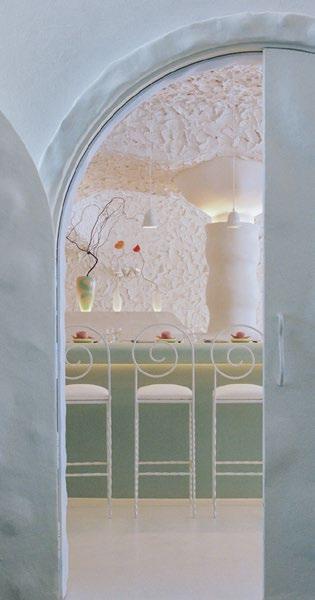
Next door to the popular Cento Pasta Bar is the new CENTO RAW BAR — and boy, is it a looker. Designer Brandon Miradi puts his mark on every element: the snail motif on stools and silverware, slinky tiered seafood towers in wavy green acrylic, brightly colored plates, quirky cocktail glasses. Chef Avner Levi has gone full tilt into the menu. Instead of the usual caviar service, he’s got caviar sliders with crème fraîche, lots of lemon, and chives. Tuna crudo comes in a tomato gazpacho. Seafood towers crowned with tiny uni tacos are heaped with oysters, shrimp cocktail, lobster claws, and snow crab claws. The lobster melt is like a tuna melt, but with lobster and Muenster cheese. Genius. 4921 W. Adams Blvd., L.A., 323-998-0404; @centorawbar. S.I.V.

LIV’S is open Thurs.–Mon., 10–4, until 8 on Thurs. 2. Enjoy dinner at LUCIA Wed.–Sun.
Open
Good friends meet halfway.
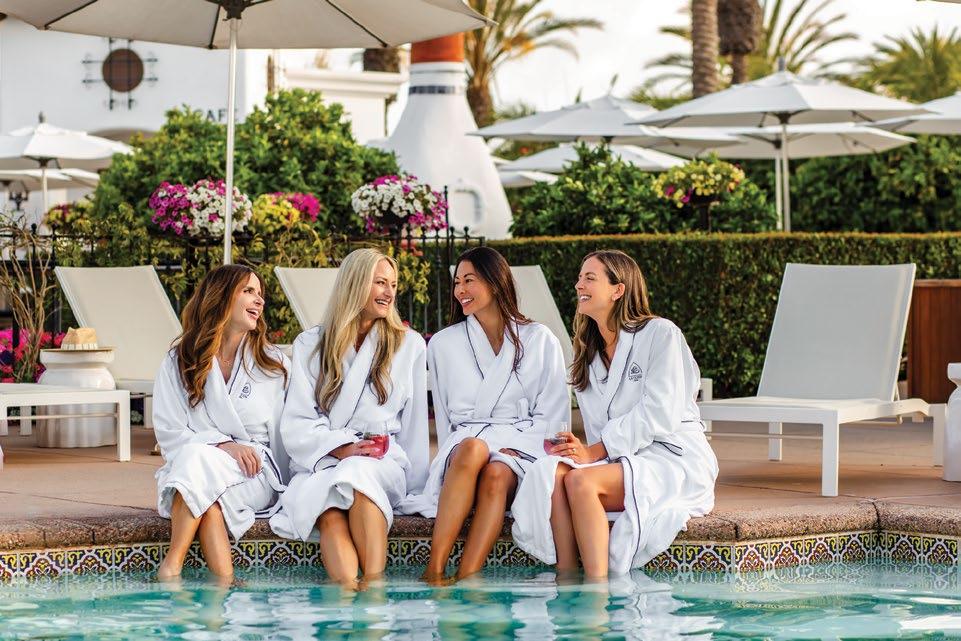
Celebrate connection in the sun-drenched gem of Carlsbad. The newly redesigned Spa at La Costa invites you to experience a new era of wellness together. With a full menu of massages, facials, and body therapies, our reimagined sanctuary is the perfect setting for shared moments.

A CENTURY IN STYLE
FENDI celebrates its new centenary-worthy collections
Silvia Venturini FENDI tapped personal memories to create ready-to-wear collections on the centenary of the house founded by her grandparents, Edoardo Fendi and Adele Casagrande Fendi, in 1925. Using both real and imagined recollections rather than relying on the company’s physical archives, the creative director weaves together sartorial traditions and patchwork techniques to create shearling coats that resemble fox, mink, or sable and balza skirts and corolla jackets to form hourglass silhouettes. For men, there are wool or leather caban coats,

Words by ELIZABETH VARNELL

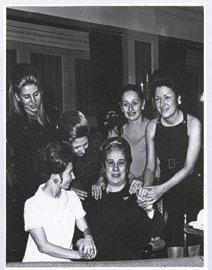
wool gabardine shirts, and micro polka-dot silk ties. Collection hues evoke Roman sunsets with terra-cotta, scarlet, dusty rose, and even buttermilk yellow as well as the green, blue, chocolate, and graphite look of dusk in the city.
Silvia’s mother, Anna, is one of the five Fendi sisters who helped shape the family-run Roman stole and handbag workshop into a fashion house and famously hired Karl Lagerfeld as creative director in 1965. He introduced ready-to-wear in 1977, and designed the women’s collections for more than five decades until his death in 2019. Silvia is the mind behind the beloved rectangular Baguette bag, first launched in 1997. Both she and Lagerfeld have evolved house codes over the years, and Silvia continues to push the boundaries of innovative workmanship.
New standouts, including the Spy bag, are reinterpreted in sorbet shades of leather. Baguettes decorated with mirrored embroideries join men’s Lui zipped duffels — all adorned with upcycled fabric charms. Jewelry designed by Silvia’s daughter Delfina Delettrez Fendi — one of the house’s fourth-generation creatives — includes snake chain collars and bracelets with fur-like textures. fendi.com. •
The Roman house marks a milestone by spotlighting its creative lineage.

Clockwise from top left: The Fall/Winter 19 show in Shanghai; the FENDI sisters with Adele Fendi in 1977; a look from Fall/Winter 25; a Karl Lagerfeld sketch; a Baguette bag vignette by L. Vitturi.
Four new stores open up at the




Shoe In

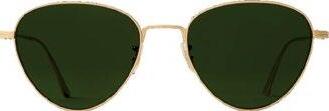
Parisian maison ROGER VIVIER has reimagined its store stocked with bags, accessories, and covetable shoes just as its Fall/Winter 25 collection arrives. There are SCP exclusives echoing the mood of French Riviera hues, including towering Viv Skate high sneakers in limited-edition white leather with a red stripe and lacquered buckle plus Grand Vivier Choc bags in navy blue leather. 714-435-0015; rogervivier.com. E.V.
Cultish Allure
Catherine Holstein’s New York–based KHAITE has finally made its way to the West Coast. Dramatic illumination and asymmetrical sculptural columns drive a stark aesthetic of blackened steel, precast concrete, and smoothened paster with square pedestals and rectangular cutouts for cool-girl essentials such as Olivia hobo bags, Marcy flats, and the brand’s coveted cashmere sweaters. 949-343-3137; khaite.com.E.V.
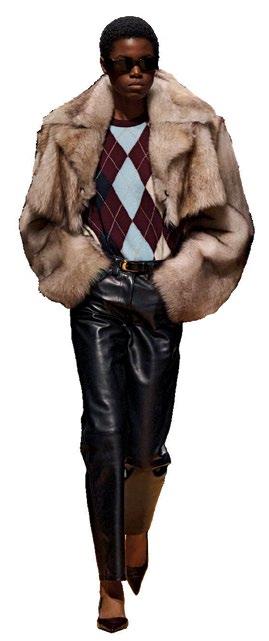
Gear Up
The expertly engineered outerwear of MONCLER — the brand founded in France in 1952 and known for mixing peak performance elements with style as well as for headline-making collaborations — has a new 2,830square-foot boutique with four unique rooms and sleek minimalist design featuring an array of opulent marble. The store features collections including Moncler, Moncler Grenoble, and Moncler Genius Fall/Winter 25 for women and men. 714-559-7331; moncler.com. R.R.

Case Study
Are your sights set on the journey ahead? TUMI’s refreshed boutique — with its marble flooring, chrome fixtures, metallic wallpaper, and clean lines — is stocked with all the necessities for upcoming excursions. Designed to travel the world, the luggage maker’s practical Voyager collection joins leather Agent bags and minimalist 19 Degree Light hardside Harrison touring essentials, along with monogramming and instore repairs. 714-429-0997; tumi.com. E.V.

shoes, $2,170; KHAITE x OLIVER PEOPLES sunglasses, $555; KHAITE Fall/Winter 25 look; MONCLER baseball cap, $420; TUMI bag, $1,295.

Old Hollywood’s
New Facets
The spirit of Parisian art deco heralds
BOUCHERON’S arrival on Rodeo
As the first jeweler to establish a presence on Place Vendôme in Paris in 1893, BOUCHERON was destined to dazzle for its Beverly Hills debut. Using an art deco lens that’s prominent throughout the jewelry house’s oeuvre, the exterior of its new West Coast flagship includes a green terra-cotta volcanic stone bas-relief depicting ferns and climbing foliage by Sant’Anselmo. The vast boutique interiors mix the Parisian

roots with the home of Hollywood. From a red carpet reinterpreted in green — also emblematic of nature and the Place Vendôme boutique’s jardin d’hiver (winter garden) — to a VIP space complete with portraits of Elizabeth Taylor and Rita Hayworth alongside their personal collections from the house, there’s a strong cinematic connection complete with a starry ceiling meant to evoke an after-party tone. A Laetitia Jacquetton sculpture intertwines
Words by ELIZABETH VARNELL
De Gournay palm trees reflect what is outside.
natural rock and blown glass, a play on notions of what is precious or ordinary, a theme the house has explored for decades in its collections. Throughout the interiors, chandeliers by Delisle reveal the integral role of the natural world in the Serpent Bohème, Nature Triomphante, and Animaux de Collection designs, while plants created by Atelier d’Offard climb walls and de Gournay palm trees reflect what is outside on Rodeo Drive. 449 N. Rodeo Dr., Beverly Hills, 424-4213993; boucheron.com. •


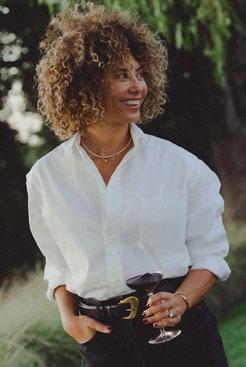
“I want to honor Dale Hampton’s legacy in this region. It’s important for me to share it.” “
Mindful Cultivation
TABALIPA WINE honors a historic Santa Barbara vineyard
Iknow what I have is special,” says vintner Paula Tabalipa, referring to the Santa Barbara County vineyard she acquired in 2018. The former Hampton Vineyard was once owned by Dale Hampton, a rock-star grape grower who is now retired, but Tabalipa wants “to honor his legacy in this region,” she says. “I think it’s important for me to share it.”
Tabalipa Wine’s vineyard is called Living Life, and the farming focus is squarely on the 18 acres of vines Hampton planted some 20 years ago. Growing Syrah was a visionary move back then in this region, now known as the Los Olivos District AVA, but the grape is a juggernaut now, producing gorgeous wines. The Tabalipa 2023 Estate Syrah is expressive and fleshy, with ripe berry flavors. Made from the same fruit, the No. 1 Rosé is zesty and splashy. “Of all wines, people buy rosé based on what they see — the color,” says Tabalipa, who is happy with the Bandol-style pale salmon hue on hers. She also makes a Happy Canyon Sauvignon Blanc.
These wines’ secret sauce could well be the sustainable farming practices and the surrounding ecosystem. “We want to be stewards of the land,” Tabalipa says. Beyond the grapes, it’s also home to this L.A. transplant. The move was inspired by the desire for a slower pace of life: Her husband, Michael Greenberg, is a cofounder and the president of Skechers, and vineyard living helps set the stage for the years to come.
The wines are the handiwork of the team at Dragonette Cellars, but Tabalipa has done her own study into the wine-making business, including viticulture courses at UC Davis. “This has fueled a passion,” she says, “so I’m going as deep as I can.” tabalipawineco.com. •
Words by GABE SAGLIE
From top: Living Life Vineyard was planted by Dale Hampton; the Tabalipa No. 1 Rosé is made from sustainably grown Syrah grapes; Paula Tabalipa sees herself as a steward of the land.

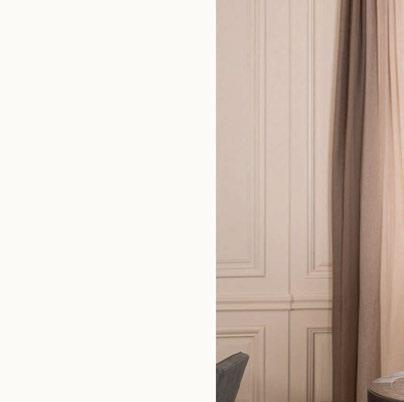

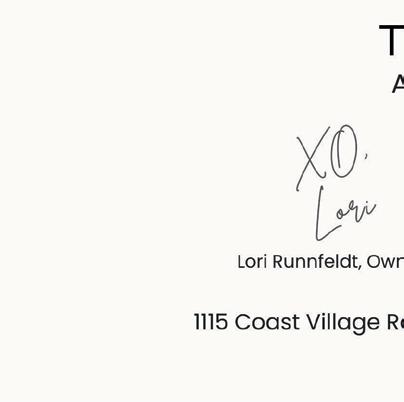

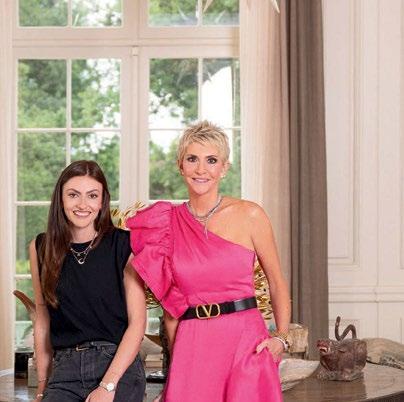


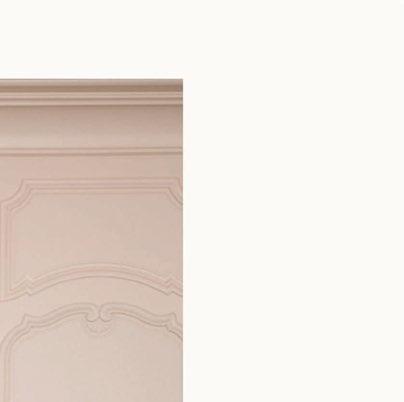


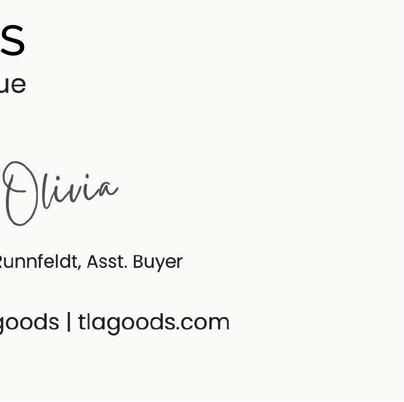

Fall Special 2025
ROSE BYRNE reveals how she can be all things at once, in life and art p. 66. C MAGAZINE ’S first book covers the California escapes where its tastemakers draw their inspiration p. 76. The Academy Museum is the perfect backdrop for fall’s most cinematic examples of POWER DRESSING p. 88. THOM BROWNE and JOHNSON HARTIG on a 30-year friendship that began in L.A. p. 98. CARMEL VALLEY’S artisans prove that the richest rewards are those made by hand p. 104. BOUCHERON’S high jewelry and contemporary treasures find their stage within the California desert p. 114.
CALIFORNIA STYLE & CULTURE
BOUCHERON Quatre Radiant Edition pendant earrings, $94,000, and necklace, $280,000. STELLA McCARTNEY dress, $1,890, and shoes, $890.
THE BYRNE
by
Words by ALESSANDRA
As she bounces between daring dramas and cute comedies, New York and L.A., ROSE BYRNE reveals how she can be all things at once, in life and art
Photography by ADAM FRANZINO
Styling
KATIE MOSSMAN
CODINHA

ULLA JOHNSON top, $240.

PRADA shirt, $2,350, skirt, $1,790, and shoes, $1,450. POMELLATO earrings, $2,525.

Rose Byrne has returned to L.A. from the wilderness — OK, a two-day RV trip from Melbourne to Sydney in her native Australia, where she and her husband, actor Bobby Cannavale, and their two young sons spent a month this summer visiting her family.
“We did RV light,” the 46-year-old actor says over a late breakfast at Little Dom’s in Los Feliz. “We didn’t really cook that much. The gas wasn’t working a lot, so we had toast for dinner.” With Cannavale at the wheel, the family could sleep in. “Bobby was good! It was hard to drive, dragging this really heavy thing behind you.” They saw beautiful beaches, wild kangaroos, and the psychedelically colored native parrots called lorikeets, all of which was exciting for a family who spends most of the year in New York and an increasing amount of time in L.A. “The best part is when you’re out of the RV,” she says, in a tone familiar to anyone who has ever spent time in one. “The sounds in Australia of the animals are really so different from here,” says Byrne, who was raised in Sydney. “For me it’s in my nervous system because it’s where I grew up. But for the boys and Bobby it’s always like, ‘What’s that?’ Bobby’s like, ‘It’s Jurassic Park!’ ”
Exploration of the unknown — and embracing a bit of personal wildness — is key to understanding Byrne’s current projects. The first, the L.A.-based comedy Platonic with Seth Rogen, has just dropped its second season on Apple TV+. This go-round, Byrne’s Sylvia and Rogen’s Will, decades-long best friends, are tackling new developments in their romantic and professional lives and confronting the shifting

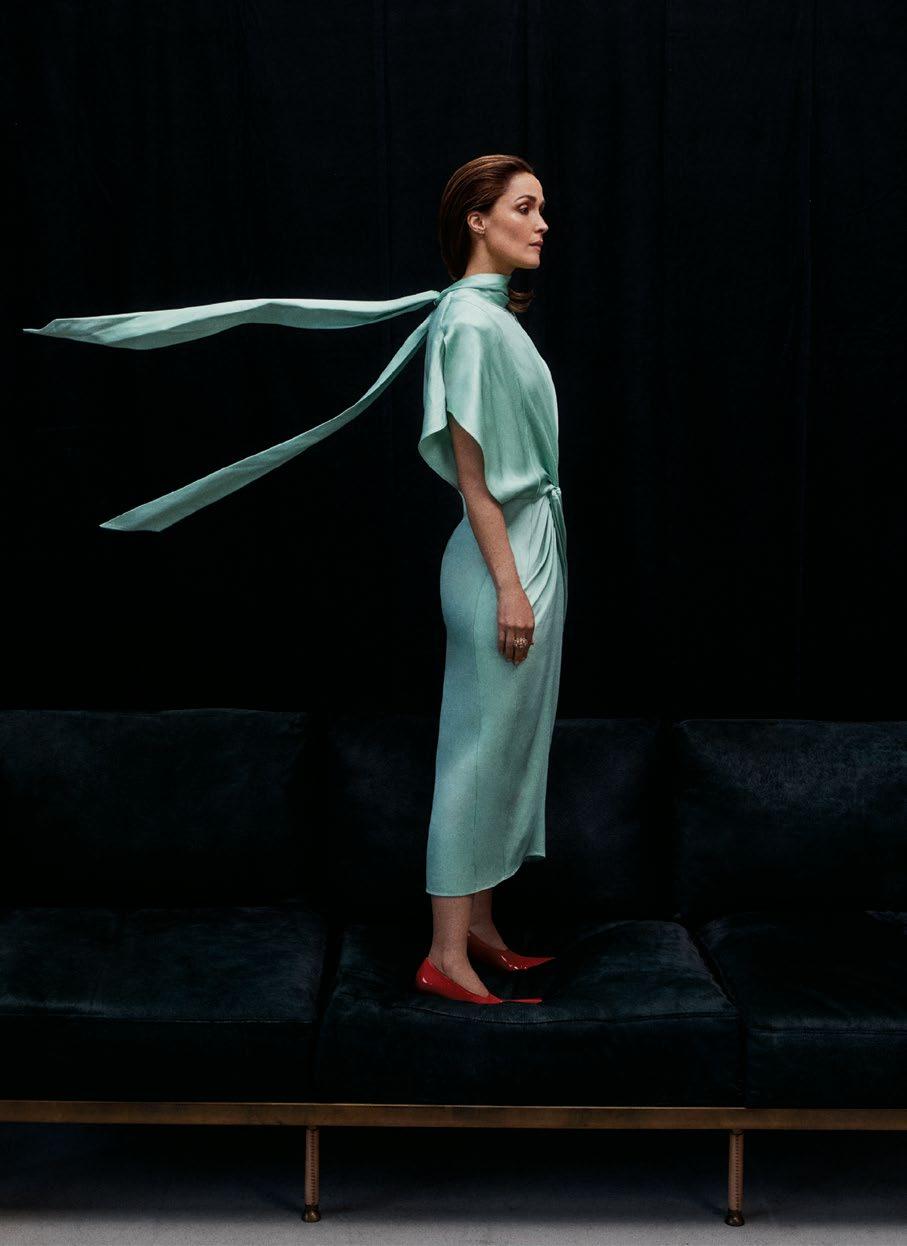
STELLA McCARTNEY dress, $1,390, and shoes, $890. VAN CLEEF & ARPELS ring, $18,100. Opposite: MIU MIU dress, $3,850, top, $1,350, and bra, $1,120. POMELLATO earrings, $2,175.
“I’m always taken aback by how kind of unhinged she’s willing to be.” SETH ROGEN


GIVENCHY BY SARAH BURTON coat, $13,000, scarf, price upon request, and gloves, price upon request. BULGARI earrings, $2,048. Opposite: LOEWE dress, price upon request.
ROSE BYRNE

perceptions of what that means for their understanding of themselves in middle age. Plenty of high jinks ensue, including one memorable set piece involving kayaking the L.A. River. “She’ll try anything,” Rogen says of his costar. “Even after making this much stuff with her, I’m always taken aback by how big a swing she’s taking, and how funny what she’s doing is, and how kind of unhinged she’s willing to be at times, which is always just wonderful to watch. And how she really makes herself awful, which is such a joy to be a part of.” For Byrne, it’s a delight to be back on set with Rogen. They also worked together on two films: the 2014 comedy Neighbors, followed two years later by the sequel, Neighbors 2: Sorority House. “We have a really easy vibe,” she says. “We immediately get each other’s rhythm. He’ll set it up and I’ll knock it down. It’s very easy back and forth.”
Byrne has filmed a combined five seasons of two shows for Apple TV+ in and around L.A. over the past five years, including three for the 1980s drama Physical, about a bored candidate’s wife who satisfies her own craving for purpose by making Jane Fonda–style at-home aerobics tapes, much to her husband’s dismay. Now back in L.A., she gets to revel a bit in the hard work that’s already been done. In 2024, Physical received nominations for outstanding cinematography for a single-camera half-four series and outstanding choreography for scripted programming, and Byrne won the Silver Bear for Best Lead Performance at the 2025 Berlin International film festival for her upcoming film with A24, If I Had Legs I’d Kick You (more on that in a minute).
“I love working here,” she says. They shoot Platonic on the same soundstage at Paramount where Rear Window was filmed, a bit of Hollywood lore not lost on a woman who still appreciates the magic of the movies (and was reared on a healthy dose of comedians like Carol Burnett and John Cleese). She prefers to spend time on the east side — where she and her family stay with her brother, the art photographer George Byrne, and his wife — and hit the Aussie-founded TrainingMate for thorough but not overly punishing HIIT workouts. She loves Los Feliz, particularly the high streets and access to Griffith Park. “I love hiking,” she says. “That is the most relaxing to me. I’d rather do that than get a massage. You can’t do that in Brooklyn. You can’t just walk up the street and go for a hike.”
Byrne began her career in Australian television, then made her American debut in the 2004 epic drama Troy opposite Brad Pitt. A few years later, she earned two Emmy and two
Golden Globe nominations for the TV drama Damages (starring Glenn Close). So audiences were surprised when she became a scene stealer in big-ticket comedies like Get Him to the Greek, Spy, and Bridesmaids, with her sharp timing and knack for accents. But after holding her own opposite the likes of Kristen Wiig and Melissa McCarthy, she has become known as a comedic force to be reckoned with. What makes her and Rogen such a good team? “Maybe it’s because we’re both from the Commonwealth,” she says. “Canadian, Australian — there’s something about it.”
Early in her career, Byrne was inspired by fellow Aussies who’d made the leap stateside, including Nicole Kidman, Toni Collette, Naomi Watts, and Guy Pearce. Some even became friends: In 1999, she had a role in Two Hands (her Sundance film debut), starring Heath Ledger, who was about to hit the big time with 10 Things I Hate About You. “We were just kids,” she says. She was 18, and he was 19 and living in Los Feliz. “He was a generous person. He was getting me in to audition for all his movies. I didn’t get any of the parts, but he was so sweet.” To promote Two Hands, they had a playful photo shoot in vintage clothes bought on Melrose Avenue.
Byrne considers her scrambled egg bruschetta and the question of what makes a good laugh. “I think that what is so mysterious about it is the ephemeral nature of chemistry with somebody in comedy,” she says. “You can have chemistry with someone on screen but not off screen. But then you see a married couple on screen and they don’t have chemistry. You can meet a funny person, but they’re not a funny actor. And a lot of comedians are really serious and not funny people at all. There’s no recipe to it. That’s why it’s so hard to do.” Rogen’s secret? He is known for enlisting from the same troupe for his projects. “Obviously he and I gravitate toward each other again and again because it works,” she says.
pull off all the ways she messes up and alienates people and wrecks her family,” Delbanco says. “She had to have an inner warmth that people would be able to identify with and love — that she would be a lovable, hopeless mess-up as opposed to an unlikable, untouchable one.” Stoller had already cast Byrne in Get Him to the Greek, her comedic break. “She’s one of the funniest people on the planet, and she doesn’t present that way,” he says. “You turn the camera on and she’s absolutely hysterical,
ceiling of her bedroom caves in, flooding her house. And did I mention it may or may not be a portal to another dimension? The movie is emphatically not a comedy, despite the excellent casting, which includes a deeply charming A$AP Rocky, who works at the motel Linda is forced to move into, and a very straight Conan O’Brien as her therapist.
The film is built around tight shots of Byrne’s face: every flicker of panic or fury; every suppressed scream as she goes another night without sleeping, monitoring the feeding machine; the countless insults and aggravations that come with displacement, home repairs, and a full-time job. It would not be far off to describe it as a horror.

“There’s a lot of rage in the world right now in general,” Bronstein says. “But I’m very interested in female rage in particular and the central struggle — that feeling of screaming into the void.”
“Someone said a cool thing to me: The film is also an examination of anxiety. The state of the movie is like, up here,” Byrne says, vibrating her hand at eye level in an expression of frenetic, desperate energy. “That’s her head. That feeling when I think anyone is in a crisis, you’re operating up here.” What made her want to enter into someone’s living hell? “This sort of project does not come along that often,” she says, citing a script that read like Bronstein had “just lit the page on fire… I just didn’t want to fuck it up.”
For Platonic creators Francesca Delbanco and Nicholas Stoller, nailing the character of Sylvia was key. “She needed a lot of charm to
in addition to being an amazing actor. She can also do drama. She can do everything.”
In If I Had Legs I’d Kick You, Byrne pretty much has to do everything. Writer-director Mary Bronstein’s film is part fever dream, part anxiety hyperloop. Byrne plays Linda, an overstretched mother of a young daughter with an unnamed medical condition (she is connected to a feeding tube every night). Linda’s husband is away for work and appears only in blame-filled phone calls, and she has a stressful therapy practice to run. Then the
During the 2023 writers’ strike, the pair spent three months together in New York painstakingly preparing for the film, analyzing the script and the characters, almost as if it were a play. They shot it over two and a half weeks in Montauk during the offseason. (Like a hardy Australian, Byrne did laps in the ocean every morning before shooting.) “I needed somebody who was an exceptional technical actor but also was able to be raw and vulnerable and totally turn themselves inside out with a very physical
Continued on page 129
Hair by MARA ROSZAK at A-Frame Agency. Makeup by RACHEL GOODWIN at A-Frame Agency.

SAINT LAURENT BY ANTHONY VACCARELLO top, $4,600, skirt, $2,700, shoes, $2,050, and gloves, $1,700. Opposite: GUCCI dress, $3,500, scarf, $540, shoes, $1,370, and tights, $300.



For our first book, C MAGAZINE looks back on 20 years of covering the Golden State escapes and abodes where stars and tastemakers draw their inspiration

Introduction by JENNIFER SMITH Words by STEPHANIE RAFANELLI


Twenty years of covering the best of California life and style have flown by in the blink of an eye. Some days, it feels as though the publication has always existed — like it was a dream inside me for so long that time can’t be quantified. I was not born a Californian but became one, and I think my outsider’s eye gave me a unique view on what was worth celebrating because I could look at this place from a perspective that didn’t take its charm for granted. If you are surrounded by beauty 24/7, do you even realize in what you are immersed?
My mission became how to bottle this feeling and share it. Was there a way to define this lifestyle — the people I met; the stories I heard; the experiences enjoyed from Palm Springs to Big Sur, San Francisco to San Diego, Malibu to Montecito, and everywhere in between?
Every magazine I read centered on New York City and the Hamptons, with an occasional story about an L.A. red carpet event thrown in. But these national publications didn’t cover the movers and shakers, the world-class art scene, the culinary wizards, the philanthropists, the boutique hotels, and the chic stores dotting the West Coast. Could I create a magazine about California that people would find compelling? In September 2005, the first issue of C was born, with supermodel (and the face of Estée Lauder) Carolyn Murphy on the cover.
years in, just getting started. The C Magazine team, full of some of the best editors and art directors in the business, always goes above and beyond to find the local angle to make it feel as insider and Cali-centric as possible.

The first issue was truly special with a bevy of world-class stories: Thomas Keller of The French Laundry; Barry Diller; social doyenne and decorator Ann Getty at her amazing Pacific Heights home (she also hosted the San Francisco launch party). Another NorCal powerhouse, Dede Wilsey, took us behind the scenes for the unveiling of the De Young’s new building by Herzog & de Meuron.
Hundreds of issues later, it still feels like we are onto something — and perhaps, even 20
We are so appreciative of the friends we have made along the way who have opened doors for editorial features, like those on Tamara Rojo’s San Francisco Ballet rehearsal, Harlan’s Promontory winery, Tony Duquette’s Dawnridge, and the iconic Lautner, Eames, Howard Backen, and George Washington Smith homes profiled. Architects and artists like Frank Gehry, Thom Mayne, David Hockney, and Doug Aitken have let us into their private worlds. We’ve spotlighted locations such as the San Andres Fault, the windmills of Palm Springs, Santa Cruz’s redwood forest, Rincon Point, Paramount Studios, Walt Disney Concert Hall, Catalina Island, Salton Sea, and the Mojave Desert. While living here does have its challenges — earthquakes, fires, and mudslides, to name just a few — there is nowhere else I want to root. Even with the recent horrific wildfires that swept through some of the most stunning vistas, taking thousands of homes in its path (including my own beloved seaside cottage), I still can’t wait to wake up and hear the birds, smell the jasmine-scented air, and immerse myself in that golden light. I can’t imagine not having California as my homeland. With two decades of content created by the C Magazine team, we are pleased to share it in this singular book with Rizzoli. Organized into different categories of this golden life with spotlights on homes, personalities, and places, we hope you enjoy what is essentially our own love letter to this storied state.
Opposite, top: Antiques dealer and head of Studiolo home furnishings Richard Shapiro’s garden in Holmby Hills. Photo by Lisa Romerein, 2013. Opposite, bottom: Julian Schnabel’s portrait of Eva Chow hangs above the French antique fireplace in her Holmby Hills abode. Photo by Adrian Gaut, 2017.
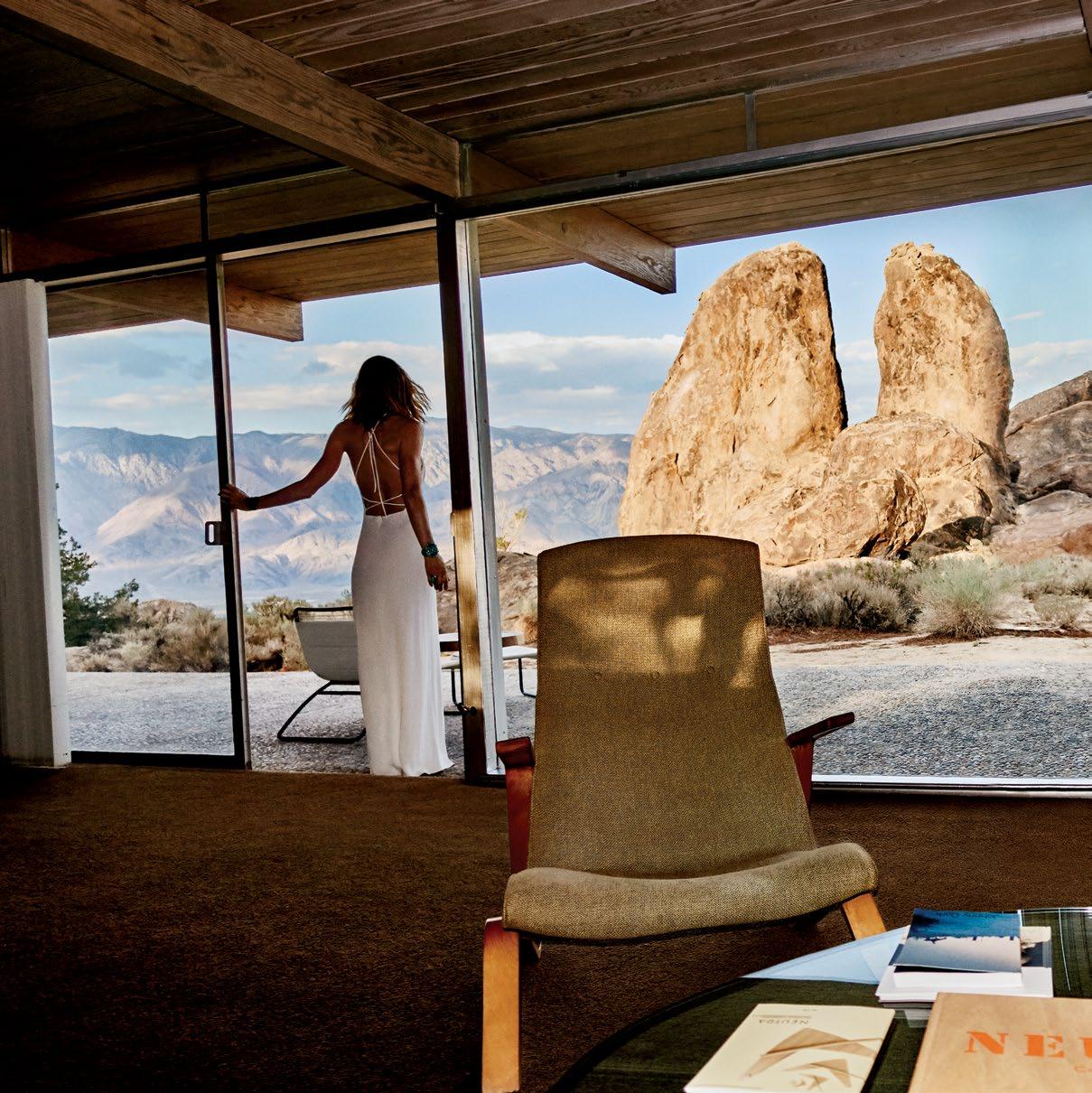
Actor Kelly Lynch and her husband, screenwriter Mitch Glazer, reside in a Lone Pine home designed by Richard Neutra. The living room is furnished with an Eero Saarinen Grasshopper chair and an Isamu Noguchi coffee table.
Photo by Dewey Nicks, 2015.
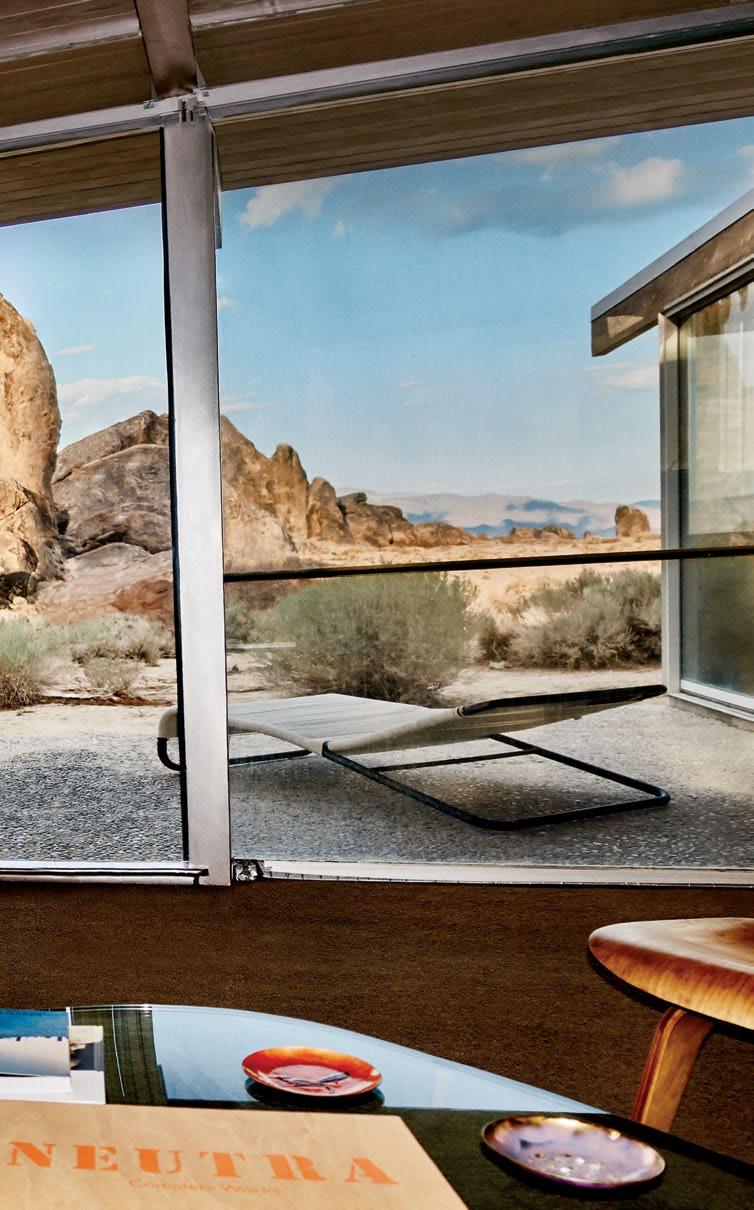
Mountain Highs
Sierra peaks breathe life into legends
California is a topographical wonder. Its 163,696 square miles comprise 12 diverse geomorphic provinces. It is apt that half this land of lofty dreamers is situated thousands of feet up in the air. Between the Pacific, Central Valley, and deserts is a soaring, three-dimensional rock jigsaw puzzle of more than 350 mountain ranges — from the far northern Klamath peaks down through the Northern and Southern Coastal Ranges to the Transverse and Peninsulas and, to the east, the Cascades and Sierra Nevada. Who could gaze up at the serrated 14,505-foot-high granite blades of Mount Whitney and not believe anything is possible?
In the 1930s, photographer Ansel Adams documented the otherworldly grandeur of the Sierra Nevada in moody, basalt blacks and lunar whites. Camera lenses are also pointed skyward in California. Ever-present, like the cityscapes of our downtowns, even the outlines of the state’s mountain peaks have become as recognizable as century-old stars. More than 400 films were shot at cowboy town Lone Pine between the eastern foothills of the Sierra Nevada and the Inyo Mountains after the first silent western. It is from all these films that screenwriter Mitch Glazer must draw inspiration when he stares through the glass walls of his Lone Pine modernist home (shared with his wife, actor Kelly Lynch), built by Richard Neutra in 1959.
California’s slopes are as rich with socio-historical references as they are flora and fauna with their old indigenous, cowboy, Gold Rush, logging, and mining communities. Maria Grazie Chiuri, former creative director at Dior, staged her cruise 2018 collection at Las Virgenes Canyon Open Space Reserve in the Santa Monica Mountains, a conservation area with multicultural frisson, referencing everything from the Cave of Munits, once inhabited by a Chumash shaman, to the female pioneers.
Great art needs great nature. So blurred are the lines between the two that designer Jenni Kayne-Ehrlich’s clapboard property on Lake Tahoe — itself the location of a century’s worth of films — restyled as the archetypal “lake house,” is almost recognizable as the set of some imaginary film that unfolds deep within the conifer forests. •
Why could Californians not ride the waves
Coast Fever
The untamed beauty of the surf
Swami’s, Trestles, Rincon, The Wedge, and Mavericks are all stops on one of the most famous pilgrimages in the world. The religion? Surfing, with SoCal as its American mecca. The easy-breezy outdoors lifestyle has come to define California in the world consciousness. Of course, America’s third largest state didn’t invent riding waves (this has been attributed to the Moche of pre-Colombian Peru), just as it didn’t create the movie camera. But what it brought to the sport was the topographical blessing of its 840 miles of coastline, steep seabed, the biggest fetch of all the oceans — which means superlative waves, a thirst for iconography for the new Californian Dream and, of course, obsession. After all, why could Californians not saddle and ride the waves of the Pacific just as their ancestors had done the horses of the Wild West?
If California’s surfers were overreachers, they were very casual ones: semi-clothed rebels with a very singular cause after the tidal waves of the youthquake washed over them, a moment captured in 1959’s Gidget with Sandra Dee. Since then, the very casual pastime of walking on water is a pre-breakfast rite from San Diego through San Clemente to Laguna Beach and Malibu.
For a quintessential ocean experience straight out of the ’50s, a ferry ride from Long Beach takes travelers back in time to the whimsical sandcastles and bygoneera campsites of Catalina Island, where the Wrigley family is doing its darnedest to keep it just the way it is.
Of course, some are fortunate enough to gaze upon the Pacific’s sparkling shores from morning until night. On Malibu’s Broad Beach, a secret path leads to a sandstone château that might have leapt out of 17th-century France. With turrets built in this century, it is in fact the fantasy creation of a master of antiquities, Richard Shapiro.
“Every mile of the forty had been enchanted,” wrote poet Robinson Jeffers in 1914 of his first journey along the coast of NorCal’s legendary Big Sur. He settled here, documenting the area’s isolation and primordial energy. Sixty years on, Big Sur remains the longest and most undeveloped coastline in the United States — the Pacific’s primal roar reminding us of the soul-freeing beauty of standing on the fringes of the earth’s greatest ocean wilderness. •

of the Pacific as their ancestors had done horses?

The Sea Ranch, set in Sonoma County on 53 acres of Northern California coastline. Photo by Iwan Baan, 2018.

Actor Ana de Armas in the Mojave Desert.
Photo by Kurt Iswarienko, 2019.

Desert Dreams
Where Joshua trees bloom stoically
The Mojave, the Colorado, and the Great Basin: California’s vast deserts are fertile spaces in the imagination. American dreams have blown like tumbleweed through their emptiness — the Wild West, atomic bombs, mid-century modern, pre-missions to the moon and Mars — only taking permanent hold in military bases and palmed oases because, despite increasing pockets of gentrification, nothing can colonize the desert — except perhaps extremes of the heat, giant boulders, wildflowers, and jack rabbits. Between them on plots of land walk ghosts of the past (Cahuilla, Mexican, American) with promises of the future and lone wolves.
Artists and filmmakers have all been drawn to this tawny, desolate beauty to try — the desert playing both muse and tabula rasa. Each experimented with their own frontiers — from Westerns shot at the set of Pioneertown in the 1950s to George Lucas’s Star Wars: Episode IV—A New Hope (1977), as if prescient of the Mojave’s Air and Space Port, to a litany of grisly movie murderers.
The savageness of the desert could not be closer to or further from Hollywood. It’s curious to think of coyote and rattlesnakes in the 1930s picking up the vibrations of Frank Sinatra, Bob Hope, and Carmen Miranda mingling at their modernist homes (like that of artist couple Steve Hash and Ally Hilfiger) in Palm Spring’s Movie Colony district. They left behind a legacy of film and music festivals in the Coachella Valley. Meanwhile, the Mojave’s trippy rocks and the sculptural shadows of Joshua trees have drawn artists whose work explores new modes of desert living in uncertain times as modernist architects, like Richard Neutra and Robert Stone (who designed the Acido Dorado house) once did.
The ephemeral Bombay Beach Festival uses a dying salt lake as an installation site for climate-concerned artists. This former 1950s resort, created by a 1905 engineering disaster on the Colorado River, once drew Sinatra and The Beach Boys. Now it is toward this counterintuitively rich cultural and environmental context that California’s creatives have gravitated in search of solitude and inspiration beneath the tangerine glow of sunrise in the desert sky. •
The first of Hollywood to escape the oppression
Canyon Calling
A shaded refuge away from the city
L.A.’s canyons have always been places to hide out from the full glare of the city. In 1910, real estate developer Charles Spencer Mann famously built America’s first trackless trolley, which ran from Sunset Boulevard along a dirt road to Lookout Mountain, to promote rural vacation lots in the Santa Monica hills — the speckled shade of eucalyptus trees lending respite from the frenzy of this new place called Hollywood that sprawled beneath it.
Raymond Chandler used this bordering counterpoint as a setting for his novels The Big Sleep (1939) and The Long Goodbye (1953). The winding of Laurel Canyon Boulevard into shadowy woodlands served as a kind of open-windowed journey into freedom. By the 1960s, Laurel Canyon had become just that: it was an artists’ enclave taken over by the musical counterculture that ran like a bucolic commune. The timber of clapboarded house muffled the wild all-night sessions at Mamas and Papas singer Cass Elliot’s place, forever remaining a reference for “canyon chic” — something epitomized by Larry Butler’s log house in Rustic Canyon, which began as a film set.
It is no accident that the first of Hollywood to escape the oppression and egotism of the studio system to another canyon — Topanga, north of Malibu — were also nonconformists, including silent movie star Pola Negri (whose lovers included Charlie Chaplin and Rudolph Valentino) and her friend Texan heiress Margaret (Mae) West. In the 1950s, actor Will Geer, who was blacklisted by Hollywood for refusing to denounce communists, moved to Topanga. His friend, folk musician Woody Guthrie, lived in a shack in his garden. Guthrie’s legendary presence in Topanga later drew the likes of Dennis Wilson of the Beach Boys and Neil Young, like moths to a musical flame.
Today, the bohemian spirit of Topanga is remarkably the same. In 2022, L.A.–based milliner Nick Fouquet moved to a geodesic dome house in Topanga Canyon — its three-story high cupola encouraging his blue-sky thinking. Meanwhile, muse and maven Sarah-Jane Wilde designs her jewelry with Stone Canyon Reservoir like a silvery liquid guitar in the distance. Her home couldn’t be anyplace but L.A., where canyons are oxygenated and inspired by the crisp morning breezes. •
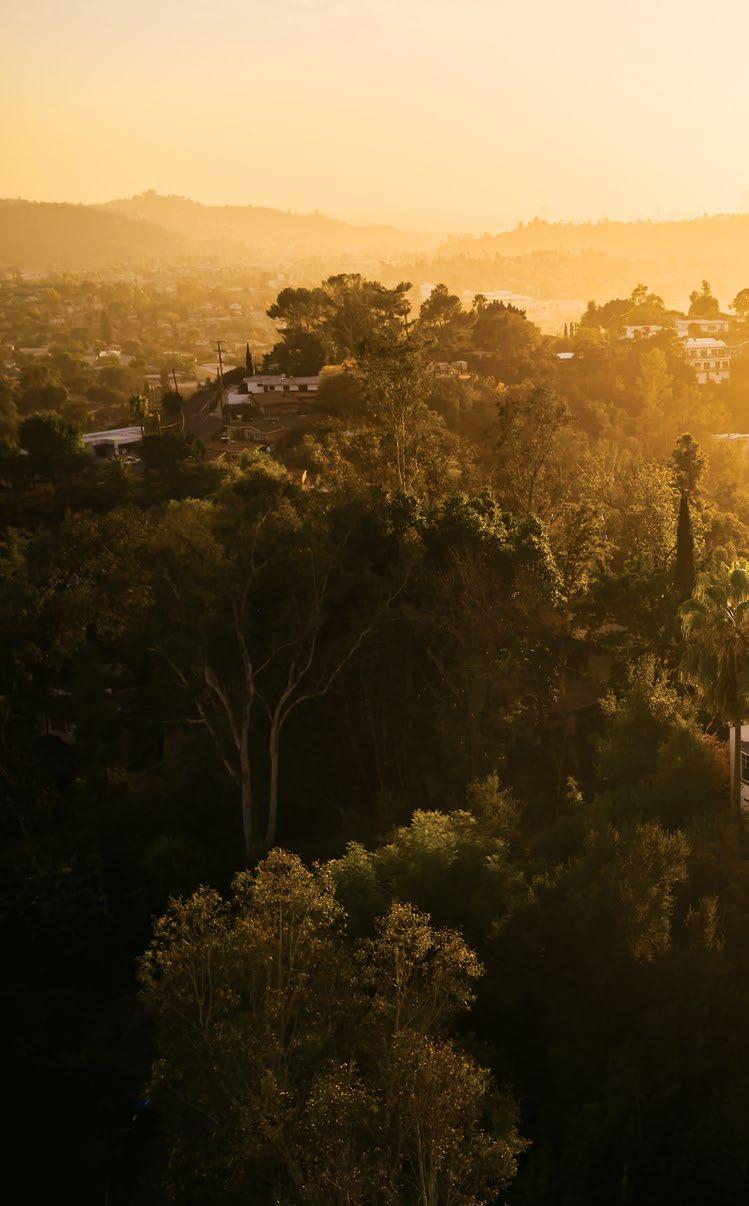
of the system to the canyons were

Flamingo Estate in Eagle Rock, home of Richard Christiansen, the founder of the namesake lifestyle brand. Photo by Adrian Gaut, 2020.

RUDSAK trench coat, $1,095. SARAH SOKOL hat. ALEXIS BITTAR earrings. SCHUTZ shoes.

The Academy Museum is the perfect backdrop for fall’s most cinematic examples of POWER DRESSING
Photography by DANIELLA MIDENGE
Styling by HUNTER CLEM
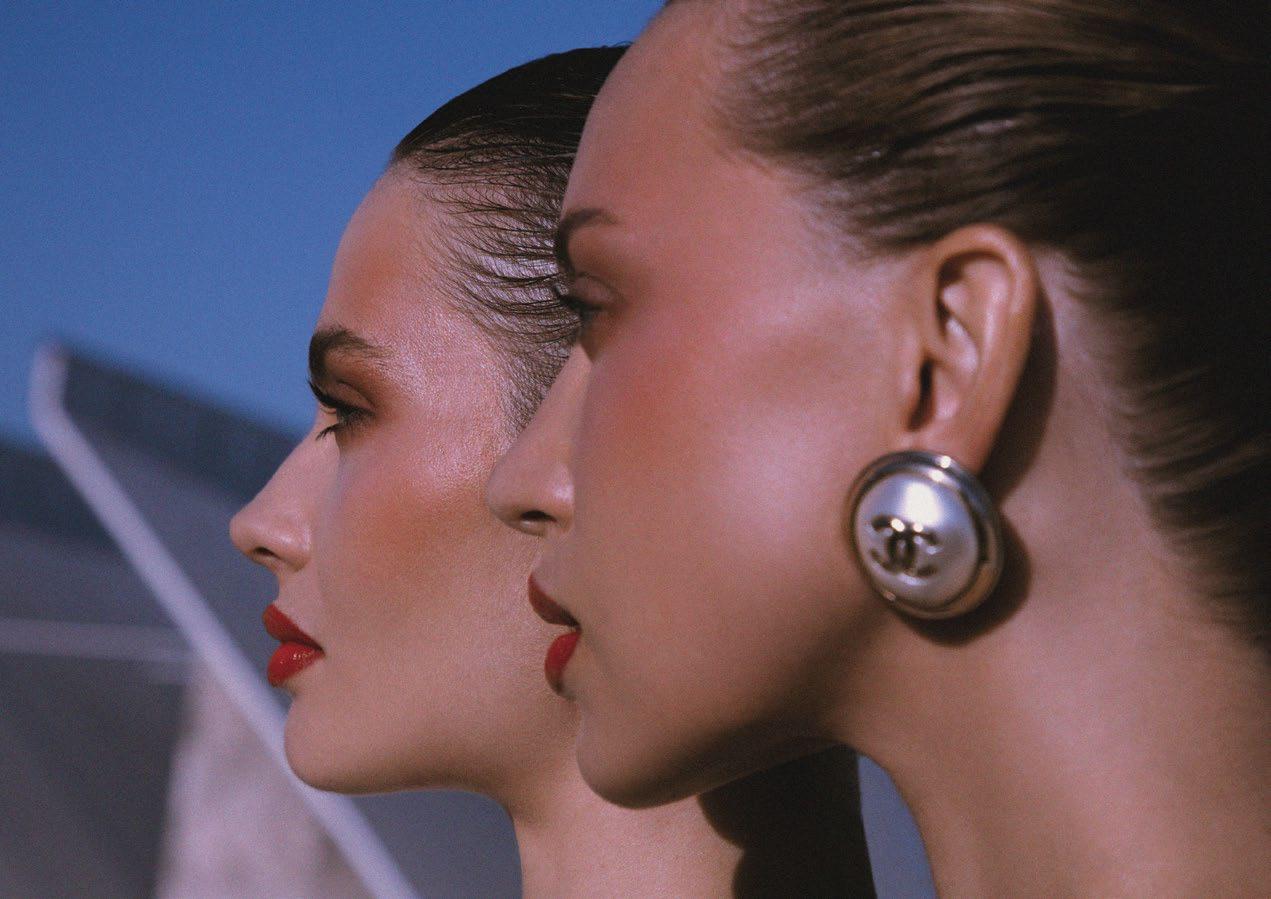
CHANEL earrings, price upon request. Opposite: CHANEL cardigan and skirt set, earrings, necklace, and bracelet, prices upon request.


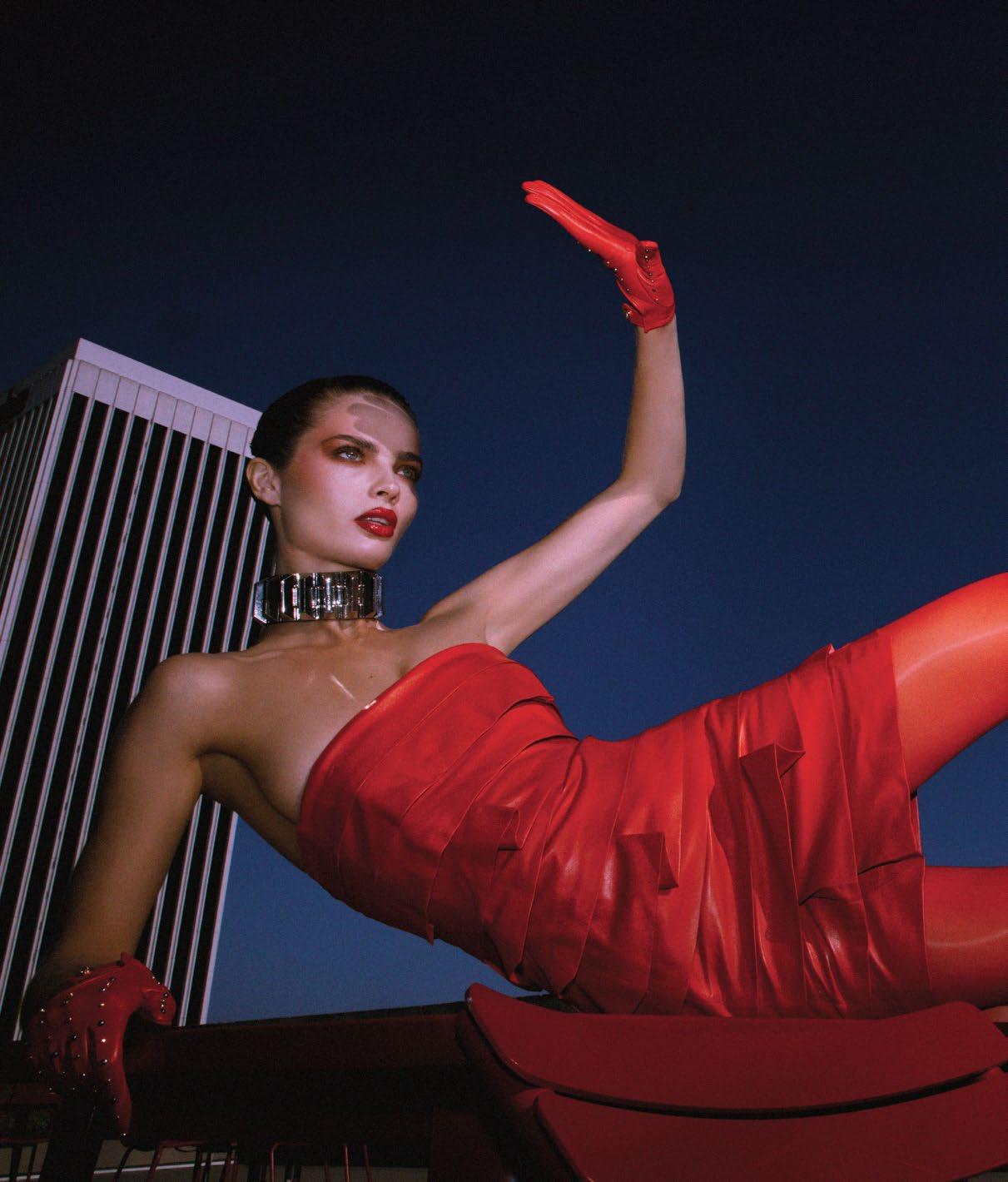
VERSACE dress, shoes, and gloves, prices upon request. JEFFREY CAMPBELL necklace, price upon request.


Left: BALENCIAGA coat and shoes, prices upon request. Vintage DIOR sunglasses, $1,999. Right: BALENCIAGA dress, belt, and shoes, prices upon request. Sunglasses, stylist’s own. Opposite left: GIVENCHY BY SARAH BURTON jacket, $6,500, pants, $5,200, shoes, $1,020, and necklace, $1,920. Opposite right: GIVENCHY BY SARAH BURTON dress, $6,000, underwear, $1,300, boots, $1,590, and earrings, $820.

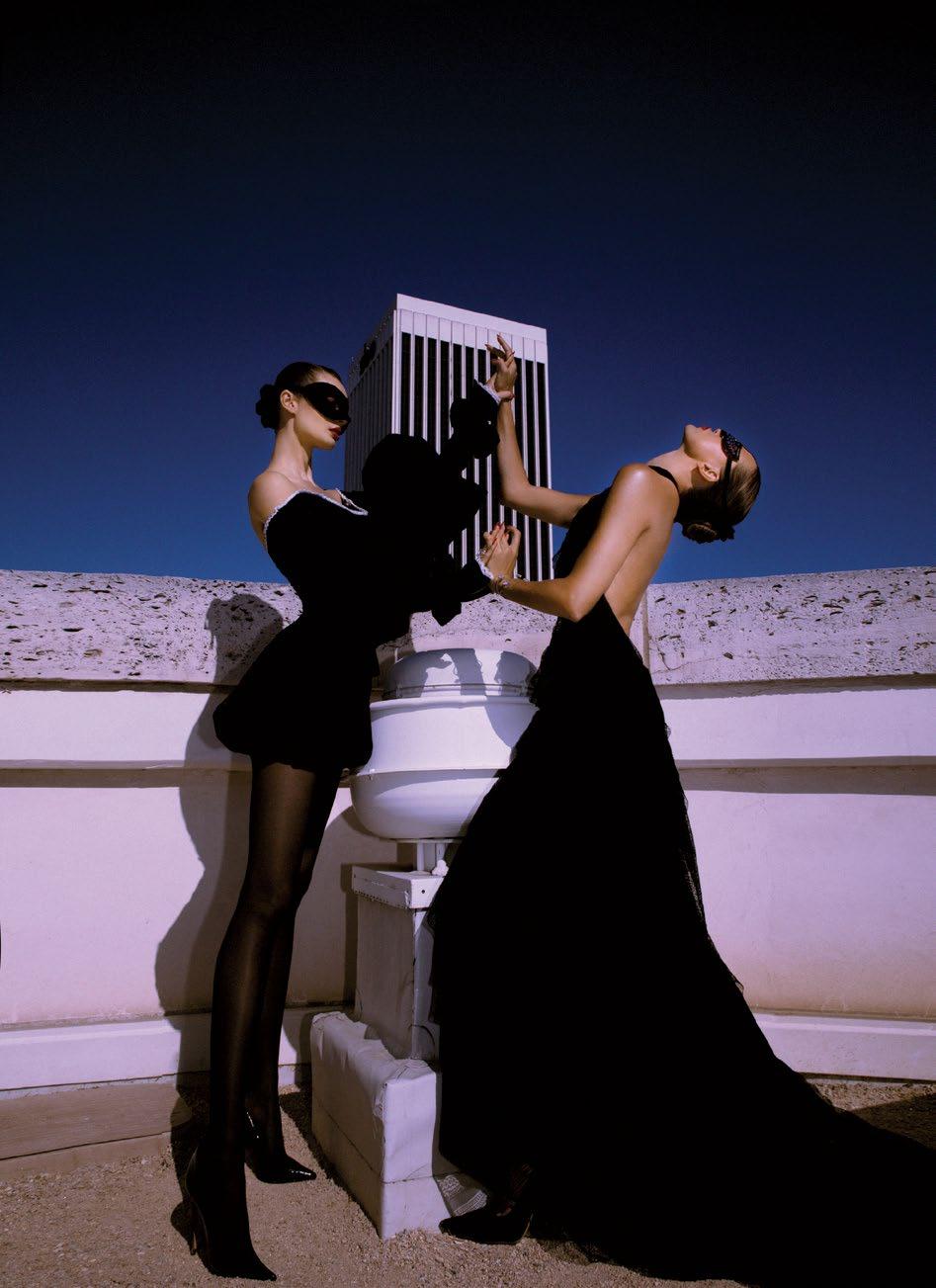
Left: ERIK CHARLOTTE dress, price upon request. SCHUTZ shoes. IZABO ring. PIERS ATKINSON mask. Right: RALPH LAUREN dress, $22,000. SCHUTZ shoes. IZABO bracelet. HOUSE OF MALAKAI mask. Opposite: VEX bodysuit. NAMILIA coat. JEFFREY CAMPBELL shoes, price upon request. BUDAHOOD earrings.
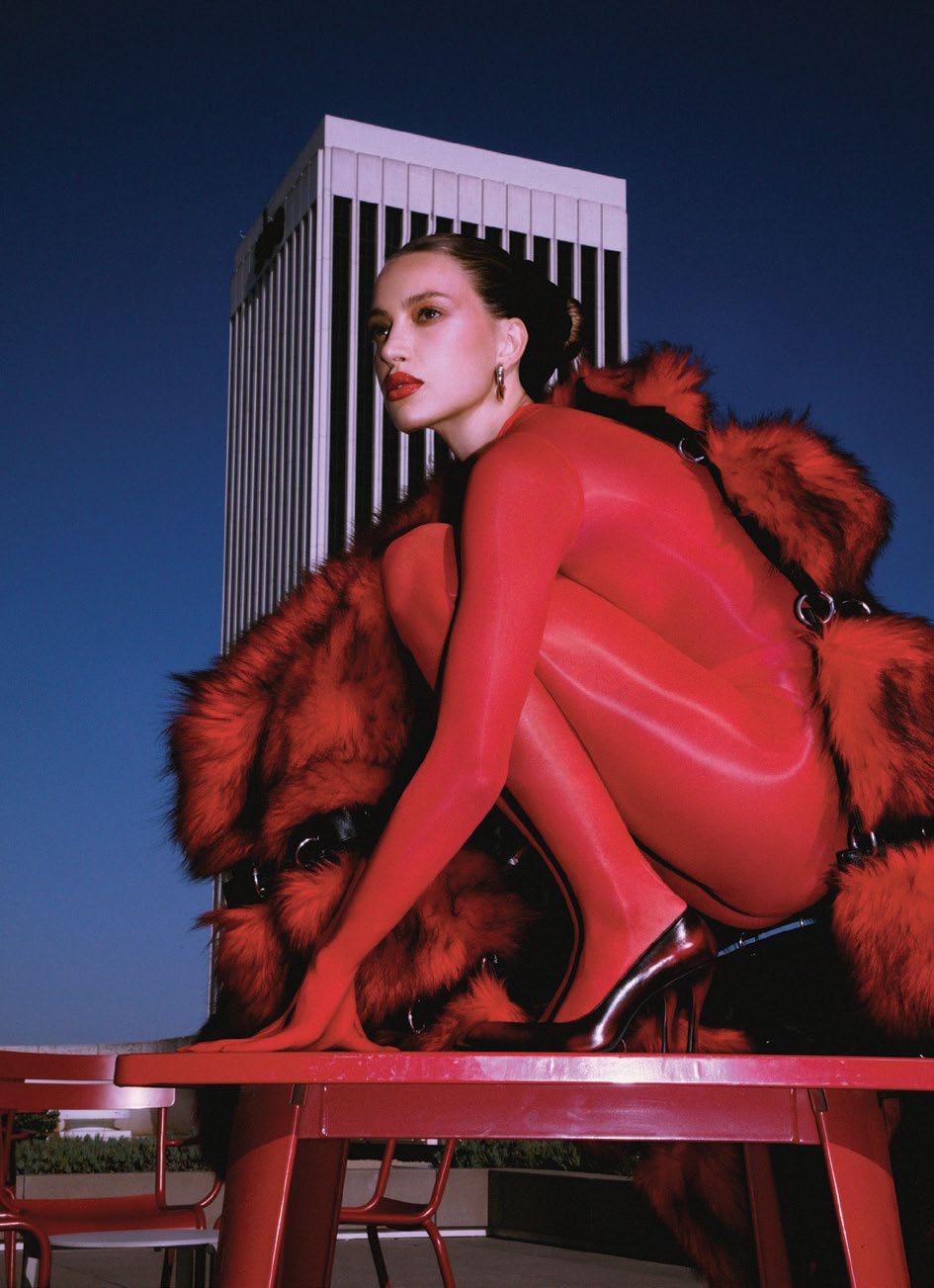
Hair by DANIELLA MIDENGE. Makeup by FRANCIE TOMALONIS at The Visionaries Agency. Manicure by VANESSA SANCHEZ McCULLOUGH at Forward Artists. Model MOA ABERG at Elite Models @moaaberg. Model MERI GULIN at The Industry @merigulin. Shot on location at ACADEMY MUSEUM OF MOTION PICTURES.
Design powerhouses THOM BROWNE and JOHNSON HARTIG, who began their 30-year bond in L.A., reflect on formative first steps as creative rookies and one-time roommates
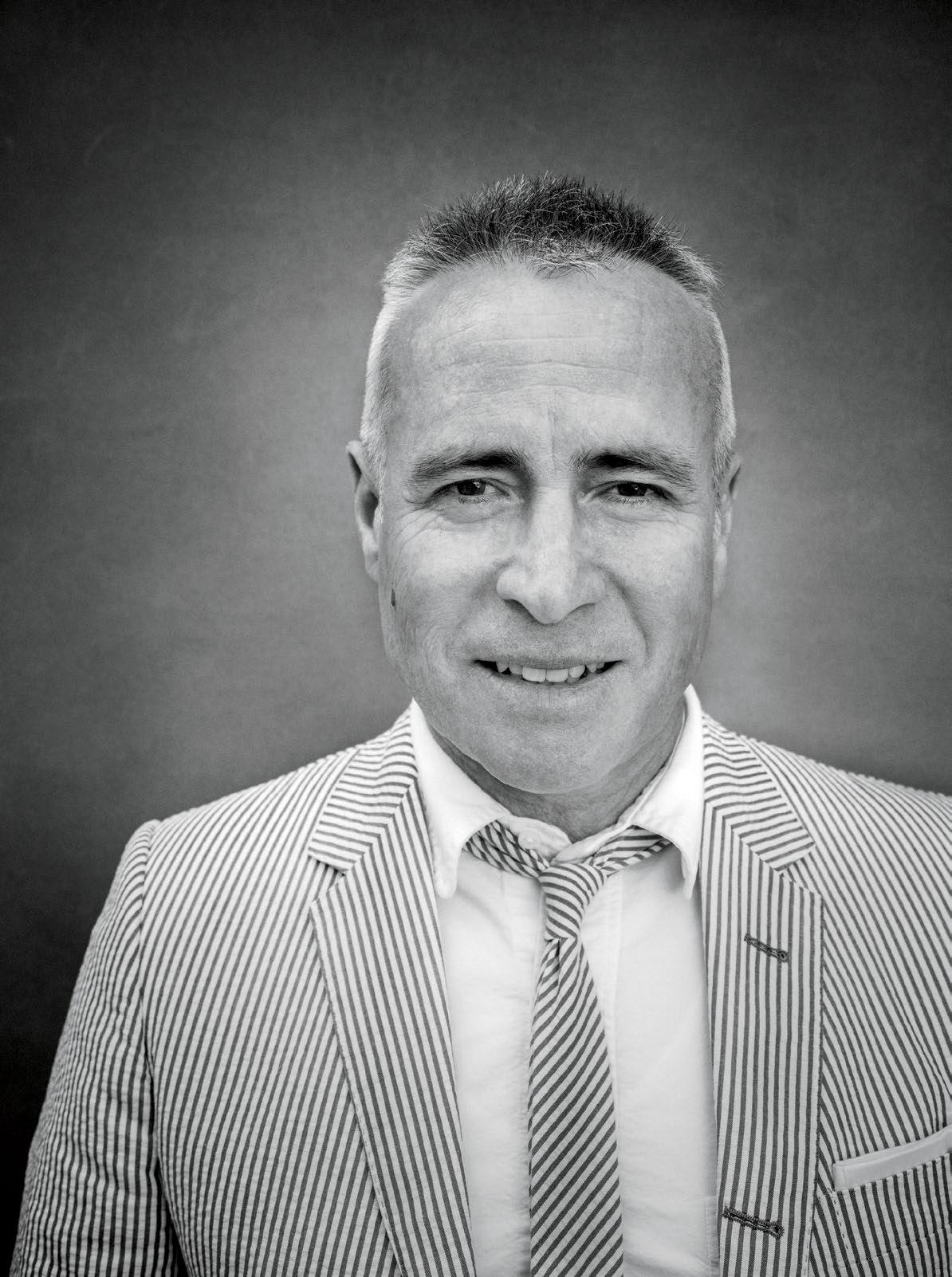
“In the ’90s, we were probably the only two people in L.A. wearing a jacket and tie.” TB
by RAINER HOSCH
Words by MAX BERLINGER

“I can call him and it’s the same Thom that was 30 years ago.” JH
Photography
THOM BROWNE & JOHNSON HARTIG
In the late 1990s, two men spot each other at a sleek, sexy bar in Los Angeles. They’re the only ones wearing suits and ties. The men are Thom Browne and Johnson Hartig, future phenoms of the fashion world.
To hear Hartig tell it, he first spotted Browne across the room, surrounded by a coterie of female pals. He then had a chance gym encounter (so L.A.) with one of the women, who advised him to go back to the bar on Friday. Hartig did so for two weeks in a row — to no avail. A year later they finally met at a house party. “The next day, I had him over to my house for tea,” Hartig says. “I lived not that far from him at that point, up in the hills. And that’s how our friendship started.”
The two men have built very different brands, both bristling with creativity. Browne left L.A. for New York and is known for his fantastical gray suits and gowns with couture-level craftsmanship, which Zoe Saldaña and Demi Moore wore to this year’s Met Gala. Out west, Hartig has made a name with Libertine, which crafts whimsical, colorful, beaded, and bedazzled creations beloved by Martha Stewart and style mavens.
The two have ridden the fickle tides of fashion, and all these years later they still call each other when they need support and have dinner when they’re in the same city.
Like every true friendship, they inspire each other to take risks while simultaneously grounding each other in the past, reminiscing of the days when Browne drove a car prone to breaking down all over the city and they lived on KFC chicken and coleslaw (ah, youth).
Today things are very different. Browne’s business was acquired by the Italian brand Zegna for $500 million in 2018, and he’s the president of the Council of
Fashion Designers of America. Hartig’s wildly inventive readyto-wear continues to flourish, with Larroudé and LeSportsac collaborations and an expansion into interior design.
Some 30 years after that first meeting, Thom Browne’s new Melrose Place store has just opened and the two have temporarily switched coasts, Browne beaming into a Zoom from a vacation in Big Sur while Hartig sets up a sales showroom in New York. Read on as the one-time roommates relive old times, embrace new ones, joke, cajole, and tease.
C MAGAZINE: Do you think being in L.A. or New York affects how you work?
TB: I don’t think of designers as being located in any location. You’re either a good designer or you’re not. It doesn’t matter where you live.
JH: You’re a genuine creative or you’re not. I’ve been amazed in 24 years of doing this how few real creatives there are in what ostensibly is one of the most creative businesses around. One thing Thom has that I don’t is fearlessness, or maybe more selfconfidence. I think I always want to keep things safe for myself emotionally. And I don’t think Thom is burdened with that.
TB: What I find interesting is you’re the same, Johnson. You have always put ideas and interesting, beautiful things in front of people that are exactly how you want them to be seen. That’s fearless. That’s confidence. You couldn’t care less if anybody cares about what you do. You want people to see what you’re doing, what’s in your head, regardless of how they’re going to respond.
C: This exchange is interesting because it does what a great friendship does: It makes you see yourself in a way you hadn’t before.
JH: Yeah. It’s what friendships are for.
“We were just coming off of grunge. I might have had bright pink–dyed hair.” JH
TB: Also, we were drawn to each other because I always saw that we — especially Johnson — were true to ourselves in a sea of people who were self-conscious and worried about what others thought of them.
C: How would you characterize your dynamic? Is one more outgoing and one more shy?
TB: Are you kidding? You’re actually asking that?
JH: I’m so embarrassed by some of the things Thom does when we’re out. [Laughs] I would definitely say I’m the one who has the more vocal and big personality.
C: I don’t know, sometimes behind closed doors, suddenly there’s a swap — Thom bullies you or he’s mean?
JH: He’s sort of the ballast that supports. I can call him and it’s the same Thom that was 30 years ago. It’s just a level of comfort that you know what you’re going to get.
TB: We always remember where we were and who we were, because I still have that person who has only $20 to his name in the back of my head. I always do. I think we’re both like that; we
never forget that.
My experience as president of the CFDA is that there are so many people who are trying to do it, and you just see that they’re not going to make it happen. That’s unfortunate. But it’s satisfying to be able to look back and think, OK, we’ve actually done it.
C: Let’s wind back 30 years. How did you first meet?
TB: Well, I moved to L.A. in ’92 or ’93, and we met each other early into that, right, Johnson? We were probably the only two people in L.A. who were wearing a jacket and tie.
JH: This was the late ’90s. We were just coming off of grunge, so there weren’t a lot of suits and ties. I was wearing it because it looked rather provocative and I was kind of fake it till you make it. I might have had bright pink–dyed hair then, and I’d wear this great conservative pin-striped suit.
C: Was there an immediate connection?
JH: Pretty immediate because within a couple of weeks we were talking about starting a clothing line together.
TB: We became friends because we felt like we were very unique in L.A. It started with the way we dress but also the way we thought about things and people.
One of the reasons I moved back to New York is that L.A. is not the most motivating place. It’s easy to get seduced into the lifestyle of L.A. and the mentality of a lot of people there, which is just hanging out, not doing very much.
C: Were you both interested in fashion at the time?
JH: No. We were deadbeats, in a way. At that time in L.A., you have to remember, you could live in an apartment for $500 or $600. It cost nothing. It was the city that people would go to and have a fairly pleasant lifestyle for almost no money.
TB: I was just saying the other




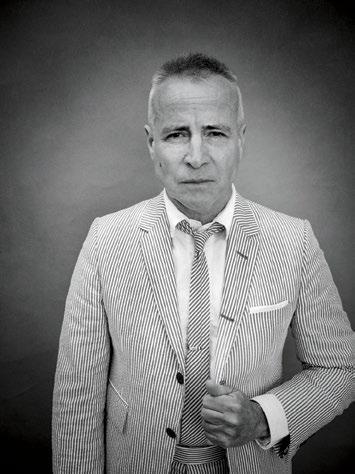


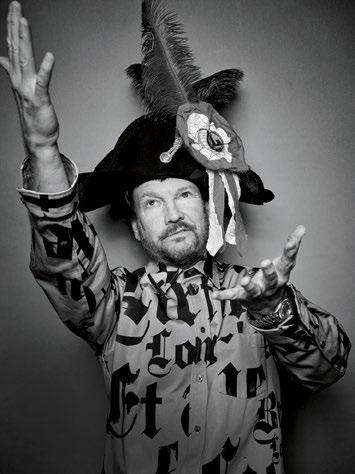

day, “I remember life in L.A. was so nice, and we literally had no money.”
JH: Nothing!
TB: And we lived a really nice life.
JH: You could go to Les Deux several nights a week and have drinks if you wanted. And it was always such a fun scene there. And we’d end up dancing with Michèle Lamy [the artist and partner of designer Rick Owens] afterward. It was a really fun period in L.A. A really fun period in the world before phones and social media.
C: You said you were considering collaborating. Were you both plotting your fashion careers?
TB: We had ideas of doing something together, but we didn’t have the means or the resources to do it. Johnson, being as resourceful as he always is, was able to start his collection. Nobody has done it like he’s done it. So many people have taken the ideas of what Johnson does and have made collections and businesses from that model. But Johnson was at the forefront and so inspiring to me. And he was the smartest businessperson too.
JH: That’s so interesting. Thank you, Thommy, for acknowledging that, because I was talking to this business … almost like a counselor or therapist recently, trying to sort out some problems. I was telling her that I have always admired your business acumen. And since the
“It’s easy to get seduced into the lifestyle of L.A.” TB

sale of your company, it’s been such a mind bender for me, constantly comparing myself to you. And it does me no good at all. I’ve done tremendous things, but I’m not rich.
TB: But Johnson, you’ve made money from day one. Your business has been successful from day one. It took my business 15 years to make any money. It was just a different approach. The success is all relative.
C: You’ve both had decades-long careers in a very fickle business.
TB: The longevity comes because when you see Johnson’s collections, you see him, and nobody can take that away. There’s also a timeless aspect when you do something so personal. That can go on forever because it is such a part of who you are, and it will last as long as you want it to.
C: You both have very specific, clear points of view in your work. Did it take time to hone
and so unique. What’s inspiring is your ability to just stay so true to yourself.
C: Why did you leave L.A., Thom?
TB: I was tired of being poor and having to worry about where the next $20 was going to come from. I had a car that broke down all the time. I needed a fresh start.
JH: I remember when he told me he was moving back to New York, that he had to get a job, and it was kind of devastating because we had become very good friends. It was a depressing summer because my first relationship had ended and I was getting over that. I was between apartments and Thom said I could live with him while I was looking, so we lived together for maybe four or five months in the flats of Los Feliz. That place was so hot and it didn’t have AC. Remember?
TB: Of course.
C: How do you keep up with each other now?
those visions?
TB: I knew exactly what I wanted from the beginning. It was just that very simple, classic idea.
JH: When I look at some of Thom’s clothes, I’m so overwhelmed, surprised, and amazed. Thom keeps things more internalized than I do. Occasionally I’ll see something that’s so breathtakingly beautiful, and not that Thom’s not beautiful, but I do wonder, Wow, where is this coming from? I tend to just wear it all on my sleeve — sometimes in my clothes, sometimes in my interiors. And Thom’s technical ability is just astonishing. I’m not really a talented clothing maker, but I’m a very talented decorator. And if I have one gift, it’s the ability to put all these disparate things together and make something happen.
TB: For me, it’s humbling to see the life that you put in front of people, and it is so inspiring
TB: We don’t talk that often, but any time we’re in the same city, we see each other. We’re having lunch next week in L.A. JH: Oh, Thom, I was going to ask you, can we go to the Polo Lounge? The Beverly Hills Hotel Polo Lounge?
TB: Sure.
JH: One of Thom’s first girlfriends, many years ago, was a woman named Cindy. So I’ll call Thom and leave messages saying [in a fake woman’s voice], “Thom, it’s Cindy, just thinking about you.”
C: Do you talk about business?
JH: A few years ago I was telling Thom about our sales numbers, and they weren’t extremely high. And he said, and this is just an example, “Well, if you’re at 10 million, just do 20 million. It’s not that much harder.” And in my mind, I was like, Jesus, fuck. It made me wonder, What do you know that I
Continued on page 129
THOM BROWNE & JOHNSON HARTIG

Thom Browne at the Hotel Bel-Air.
OPPOSITE: Johnson Hartig at the Libertine studio in Hollywood.

The sunset view at the Carmel Valley Ranch, overlooking a small vineyard and a golf course designed by Pete Dye.

From the field to the cellar, the hive to the table, CARMEL VALLEY’S artisans prove that the richest rewards are those made by hand
Photography by ALANNA HALE Words by CHRISTINE LENNON
By the time you reach Spreckels and take the exit for Highway 68 from the 101, you’ve likely noticed that the drive to Carmel Valley Village is not your typical road trip. The 15-foot-tall plywood likenesses of local farmers dot the sprawling fields — painted in meticulous detail by Monterey County artist John Cerney in the 1990s — as if you’ve pierced through a portal in time. They remind you that your modern concerns are better left behind. When you follow the winding mountain roads, through pockets of fog and mist and a nearly 40-degree drop in temperature, you marvel at the view and understand why this remote pocket of Northern California, with just 4,500 residents and surrounded by fertile land, is both a longtime favorite and a newly popular destination.
It’s abundantly clear why Monterey County is expanding its airport to accommodate the many visitors who arrive for destination weddings, golf trips, family holidays, and wine-tasting weekends without the white-knuckle driving. It has also become a necessity to service the many new residents who fell so in love with the hard-to-reach paradise that they put down roots here.
“The area has blown up a lot recently, but in a great way,” says Gwynneth Aldis, an artist who works with her parents and her twin sister, Megan, a filmmaker, running Tancredi & Morgen, a 38-year-old housewares shop in the valley selling vintage hotel silver, French Champagne bowls, and distinctive textiles.
“In the pandemic we saw a lot of young families come here to buy homes, which no one anticipated, so there was an influx of very kind people who are so invested in the community and want it to thrive. This area has a pulse right now. It hasn’t changed in a lot of ways — that keeps it really special. But this next generation has been able to contemporize the amenities. My parents have had the shop here since my sister and I were born, but we’ve fallen in love with the place all over again.”
The Carmel Valley was inhabited by the Esselen and Rumsen Native communities, and later it was part of the 6,600-acre Rancho Los Laureles Mexican land grant in the 1830s that included much of Monterey County. Neighboring Big Sur and Carmel-by-the-Sea have received significant attention over the
Opposite top, from left: The gift shop at Earthbound farms; Janna Jo Williams at Earthbound; Folktale Winery & Vineyards. Opposite center, from left: Folktale’s Semillon-Sauvingnon Blanc Blend; the new Carmel Valley Creamery; cut flowers at Earthbound Farms. Opposite bottom, from left: Rustic local flavor at the creamery; Maddie Doyal helps cheesemaker Sophie Hauville; Earthbound’s legendary Albion strawberries.
past century for their majestic coastal beauty and as havens for some of America’s greatest artists. What the Valley has that both those communities lack, however, is consistent, warm sunshine for a few hours on most days of the year. The coastal fog retreats every morning and returns in the evening to create a microclimate that allows for verdant gardens, thriving fruit trees, corduroy-like rows of Bordeaux grapes, and grazing pastures for animals. By the 1920s, it was established as a supply hub for ranchers and cowboys. Hacienda-style houses using Carmel stone and terra-cotta roofs became popular retreats for visitors from Los Angeles and San Francisco.

“We’ve fallen in love with the place all over again.”
GWYNNETH ALDIS
The first business to put the small town on the national map was Earthbound Farms, the organic food pioneer that introduced American grocery stores to pesticide- and herbicide-free salad in a bag in the 1990s. Its founders started on a 2.5-acre plot of raspberries in 1984 and transformed it into a $500 million clean-agriculture powerhouse.
In 2019, Earthbound was sold to Bruce and Linda Taylor of Taylor Farms, who hired a team to revive the market, café, and five-acre experiential farm. Operations manager T.J. Silva runs the property, which grows pick-your-own berries and flowers and hosts private events and tours. He’s developing a regenerative farming program focused on soil health, advancing the healthy agricultural practices at Earthbound and Taylor.
“The Albion strawberries we grow here are used in the kitchen for pastries, lemonade, and smoothies,” he says. “We grow garlic and dry it for a garlic-braiding event that one of our longtime farm workers, Janna Jo [Williams], hosts. And the greens and vegetables we grow are delivered to restaurants within a 30-mile radius.” Considering the community’s size, a surprising number of restaurants and caterers welcome those deliveries.
Local produce and unpretentious cooking rule here. Visitors and locals alike devour the al pastor tacos at Meg’s at the Chevron station and buy eggs at one of many roadside stands. But they also support Jerome’s, a specialty-food store owned by the Bernardus Lodge chef Jérôme Viel and his wife, Jessica, and savor bold Syrah and Merlot made in family wineries in the hills. Twenty-five wine-tasting rooms still dominate the retail culture, and tractor rides are available to take patrons around town. But there are also a handful of elegant





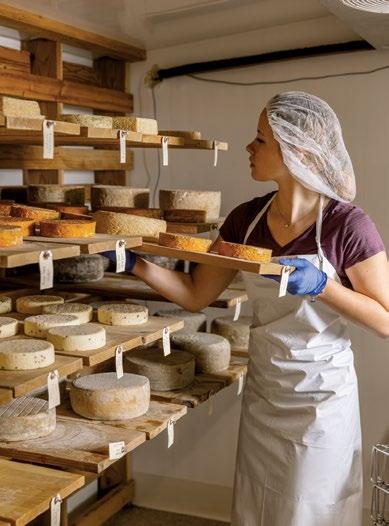

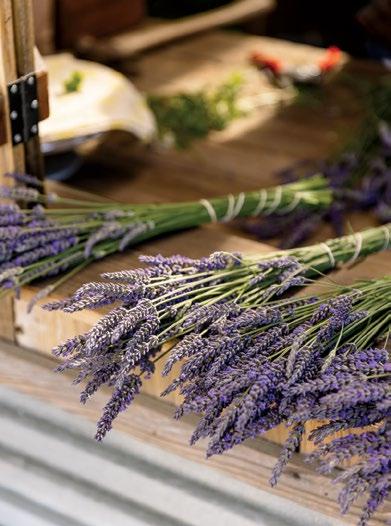
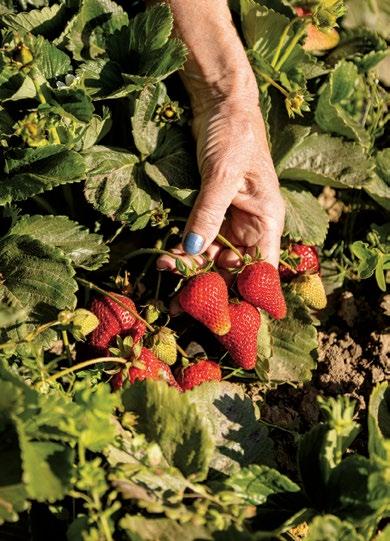

Salvador Preciado manages the herd of goats, alpacas, and mini Highland cows at the Carmel Valley Ranch.

stores, like the Olivia & Daisy bookshop, and a small but impressive hyperlocal food scene has emerged in recent years.
Nearby Carmel Valley Ranch, which opened as a golf club in 1981 and became a resort a few years later, has 179 suites and hosts more than 50 weddings annually. After a renovation in 2019, the ranch embraced the region’s agricultural heritage, started a thriving beekeeping program to pollinate the grapevines and flora, and opened a corral for a small herd of goats milked for cheese made on-site, as well as cows and alpacas. Wedding guests are always delighted to be served a beer on the back of one of the resident burros, led by farmhand Salvador Preciado. Hotel guests can also suit up and learn about the bees and honey production.
Many of the larger vineyards with tasting rooms, like the 100-year-old Holman Ranch, the storybook-ready Folktale Winery, and Pelio, double as event spaces. A community of caterers, including Annie Hobbs’s Mirth Kitchen, cook for parties held there and host pop-up tasting events in the town’s smallbusiness district.
Sophie Hauville, a co-owner and the primary cheese-maker at Carmel Valley Creamery, recognized that rare combination of sophistication and homespun charm when she and her business partners, Ken Howe and Justin Saunders, started their small operation last year. Hauville, a native of Normandy, was working in business and marketing in Chicago and San Francisco before taking a hiatus in Big Sur. She rented a cabin next to a goat farm, intending to stay for a few weeks. When COVID-19 restrictions interfered with her return to the city, she started watching her neighbor, cheese-maker Charlie Cascio, make yogurt and cheese. A new passion was born.
“I ended up staying there for three years,” Hauville says. “Charlie had a creamery that he lost in a fire, so he brought his goats and his cheese-making operation over to the Carmel Valley Ranch resort. He was planning to retire, so he asked me if I wanted to take it over — he taught me how to do it. I was milking the goats by hand, making the cheese. It was more interesting than doing spreadsheets.”
Once Hauville saw how fascinated the resort’s guests were by the process, she decided to start her own creamery. She went to France to get tips from some of her favorite cheese-makers there. Back in the valley, she sourced milk from nearby
“A neigbor taught me to milk his goats by hand.”
SOPHIE HAUVILLE
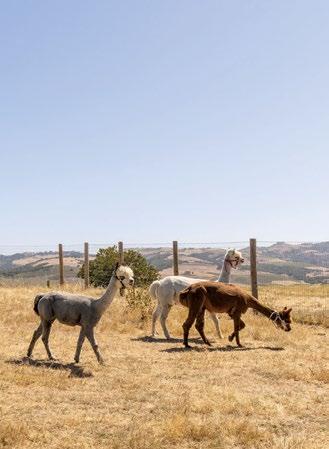
dairies, including Schoch and Claravale. She set up shop in an old general store and restaurant built in 1927, run by beloved shopkeeper Rosie Henry (memorialized with a hand-carved bench near the entrance) from the 1940s to early ’80s.
“We’re making cheese in the three big families, which are soft, a bloomy rind, and hard,” she says. “Then we make several variations. We have this Cowboy Camembert and one with a layer of ash, called the Lady Gray. Then we have a lactic set version with a little bloomy rind, called the Leo.”
The aging rooms have picture windows to give customers a peek into the process. And the response from the neighbors, some of whom arrive on horseback and tie up to a hitching post in the parking lot, is so great that she can barely keep up with the demand.
Another popular newcomer to the Village is Ad Astra bakery, owned by chef and baker Ron Mendoza, which opened its second location in the Mid-Valley Shopping Center. Mendoza worked in California restaurants for decades and trained as a pastry chef at The French Laundry, the Michelin-starred Napa Valley landmark owned by Thomas Keller. He started baking sourdough about six years ago inside a 400-square-foot kitchen at Other Brother Beer in Seaside.
“We started selling at farmers markets, and then restaurants started asking for it. We quickly outgrew that space, and now our new spot in downtown Monterey — a commercial bakery with about nine seats to dine in — is about 3,000 square feet,” says Mendoza, who expanded the bakery menu to include focaccia, ciabatta, and outstanding cinnamon rolls. “We just opened in the Village, and the locals are so happy we’re there. We took over a small coffee shop, and we’re offering a lot more sit-down food, hoping to get a beer-and-wine license soon. As with everything I tend to do, I’m there to fulfill a need. No one was making Tartine-style sourdough on the Monterey peninsula. The new place came from the same idea. There was nowhere to go in the Valley to relax with coffee and pastries in a nice environment.”
Aldis of Tancredi & Morgen says that Ad Astra is opening at the ideal time and that Mendoza knows how to contribute to the Valley, with its relaxed culture, lack of pretense, and slow-growth mentality.
“Ron has fostered all of this young talent across the peninsula. He’s educating and training so many young people here so he can pass on the knowledge,
Continued on P.129
Alpacas at the Carmel Valley Ranch love to photobomb selfies. Opposite top, from left: Newcomer Ad Astra bakery; hives at Carmel Valley Ranch; the beekeeping experience. Opposite center, from left: Ad Astra owner Ron Mendoza; local charm at the Running Iron restaurant; one of Mary Ellen Parsons’s intricate quilts. Opposite bottom, from left: Parsons in her quilting studio at Parsonage vineyard and winery; Running Iron has the feel of a saloon; honey samples at Carmel Valley Ranch.

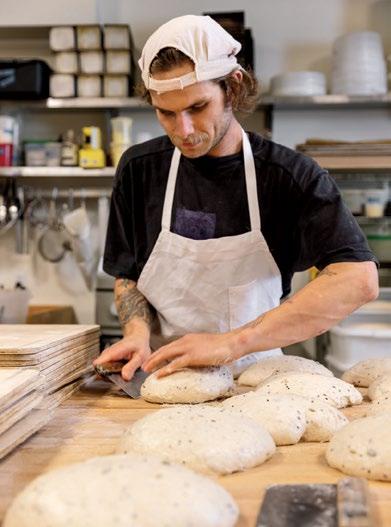
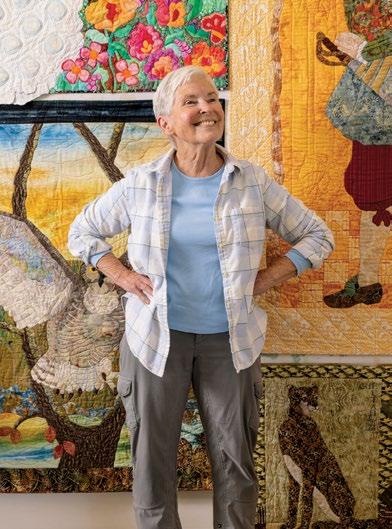
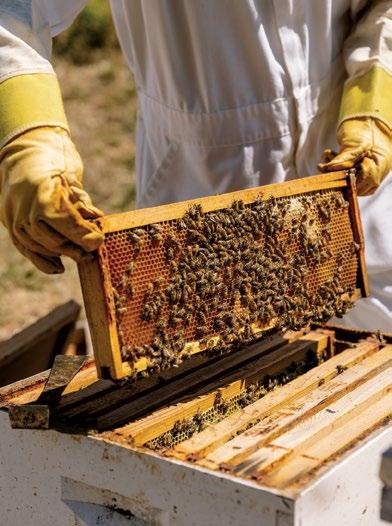


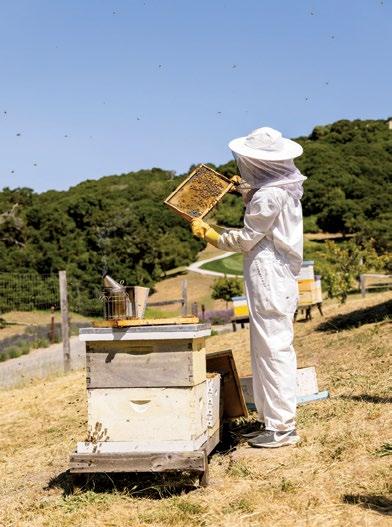



“We just opened in the Village. No one was making Tartine-style sourdough on the Monterey peninsula.”
ROBERT MENDOZA

The outdoor wine garden at Folktale is a popular spot for concerts and private events.


BOUCHERON X C MAGAZINE
As BOUCHERON journeys west from Paris, its high jewelry and contemporary treasures find their stage within the sunlit wilds of the California desert BOUCHERON, which began life in 1893 on Place Vendôme in Paris, is now open at 449 North Rodeo Drive, Beverly Hills, 424-421-3993; boucheron.com
BOUCHERON Quatre Clou De Paris single clip earring, $1,430. BOUCHERON Quatre Radiant Edition single clip earring, $2,470, choker, $124,000, bracelet set, $232,000, wedding band, $20,550, small ring in yellow gold, $8,900, wedding band in yellow gold, $5,800, large ring in yellow gold, $13,300, large ring in white gold, $14,100, wedding band with grosgrain diamonds, $7,800. MICHAEL KORS bodysuit, $590. BRANDON MAXWELL pants, $2,900.
Photography by KURT ISWARIENKO
Styling by PETRA FLANNERY STUDIO


Top: BOUCHERON Quatre Classique tube bracelet, $55,000, large ring with diamonds, $11,650, small ring with diamonds, $8,400, wedding band, $5,900, large ring, $6,550. BOUCHERON Quatre Clou De Paris yellow gold wedding band, $1,960. KHAITE shirt, $890. RALPH LAUREN jacket, $4,290. Bottom: BOUCHERON Quatre Radiant Edition necklace, $183,000, large ring in yellow gold, $13,300, small ring in yellow gold, $8,900, wedding band with grosgrain diamonds, $7,800, wedding band in white gold, $1,590. HERMÈS sweater, $11,500, and gloves, $3,250. JACQUES MARIE MAGE sunglasses, $1,075.
Classique large choker, $227,000, tube bracelet, $55,000, large ring with diamonds, $11,650, small ring with diamonds, $8,400, wedding band, $5,900, large ring, $6,550.
Quatre
BOUCHERON
Clou De Paris yellow gold wedding band, $1,960. KHAITE shirt, $890. RALPH LAUREN jacket, $4,290. SAINT LAURENT BY ANTHONY VACCARELLO jeans, $1,230.
Quatre
BOUCHERON

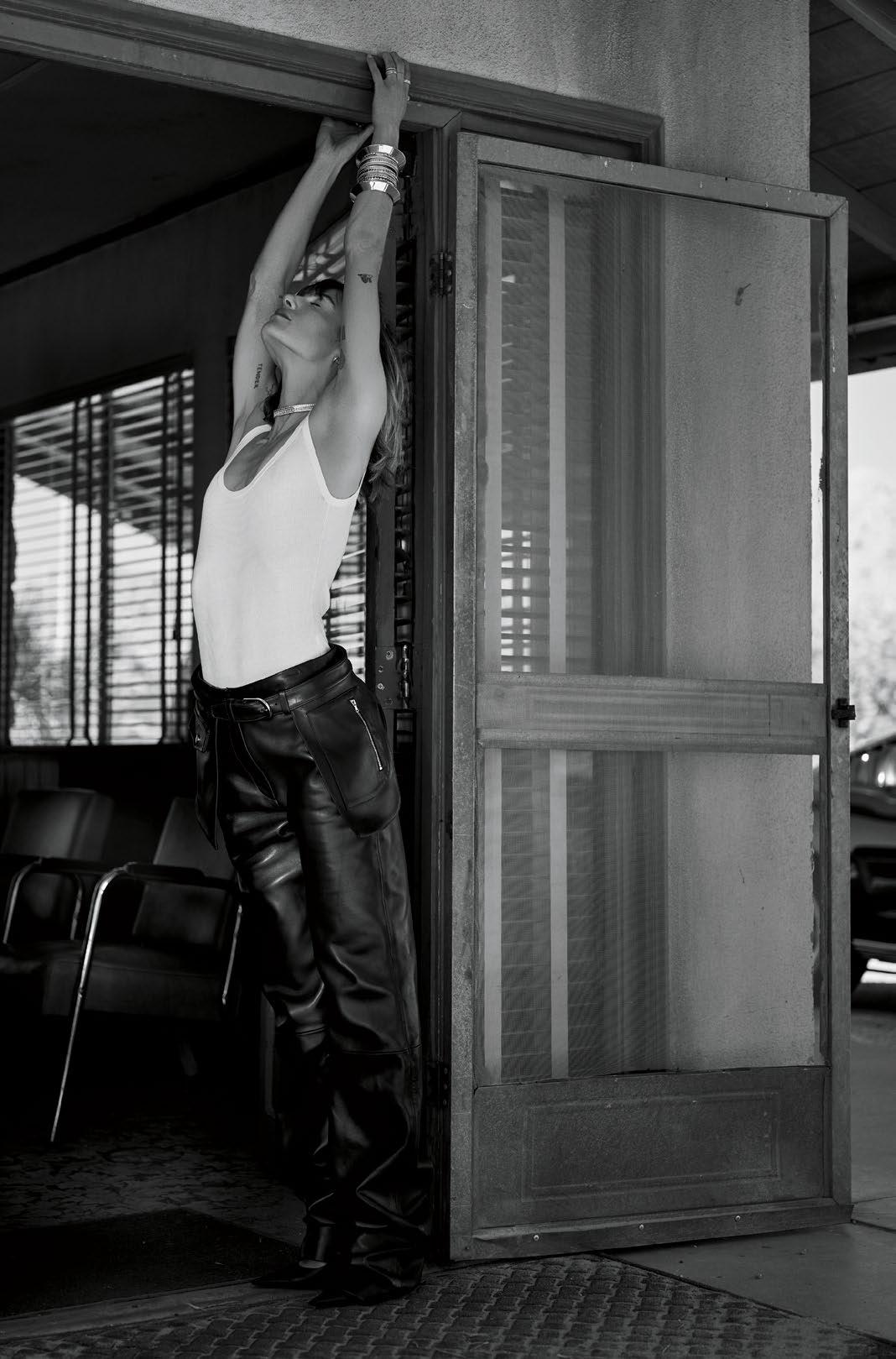
Styling by MARCO MILANI at Petra Flannery Studio.
Hair by VIRGINIE PINEDA at The Visionaries Agency. Makeup by ELAYNA BACHMAN at Tracey
Mattingly. Manicure by VANESSA SANCHEZ
McCULLOUGH at Forward Artists. Model EMILY LABOWE at Photogenics @emlabowe. Shot on


Top: BOUCHERON Quatre Radiant Edition pendant earrings, $94,000, and necklace, $280,000. STELLA McCARTNEY dress, $1,890. Bottom: BOUCHERON Quatre Radiant Edition necklace, $183,000, large ring in yellow gold, $13,300, small ring in yellow gold, $8,900, wedding band with grosgrain diamonds, $7,800, wedding band in white gold, $1,590. HERMÈS sweater, $11,500, shorts, $9,700, and gloves, $3,250.
GET THE ULTIMATE INSIDER’S GUIDE


Sanctuaries of the Soul
High design meets ancestral wisdom in these MEXICAN RETREATS that restore mind, body, and spirit
Words by LESLEY M c KENZIE

O V E R I E S
The Temazcal at HOTEL ESENCIA at the expanded spa offering ancient ritualistic treatments.


Hotel Esencia
Tucked between Tulum and Playa del Carmen on a stretch of pristine Caribbean coastline, HOTEL ESENCIA in Xpu-Ha is a paradisaical 50-acre retreat where design, nature, and wellness converge. Owner and creative director Kevin Wendle has reimagined the property, once the private estate of an Italian duchess, as a glamorous and sought-after hideaway, beloved by discerning travelers for its privacy and pared-back elegance.
Featuring 47 rooms and four villas, accommodations run the gamut: spacious beach-adjacent Jungle Suites, Beach Suites outfitted with private terraces, and two-bedroom, two-story Pool Villas that come with full-size swimming pools. The property also includes a tennis and pickleball court, heated pools, access to a private beach, and three restaurants.
At the heart of the estate is the newly relaunched Esencia Spa, an immersive sanctuary that honors Mayan healing traditions while incorporating a sensory deprivation tank, infrared sauna, and an ice chamber. Restorative treatments include the jet lag–defying Traveler’s Recovery Facial and the anti-inflammatory Coffee Ritual, as well as the healing Temazal ceremony, which is centered on the spa’s sweat lodge. hotelesencia.com

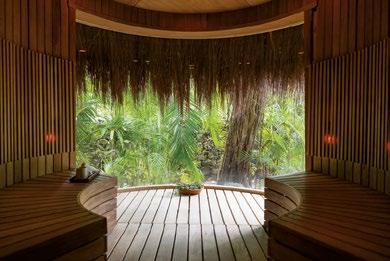

MEXICO | RIVIERA MAYA
1. The scenic Xpu-Ha beach. 2. A family villa pool. 3. The newly relaunched Esencia Spa. 4. The sauna. 5. A relaxing spa treatment. 2.

Seven dining concepts, including open-fire, showcase the region’s bounty.
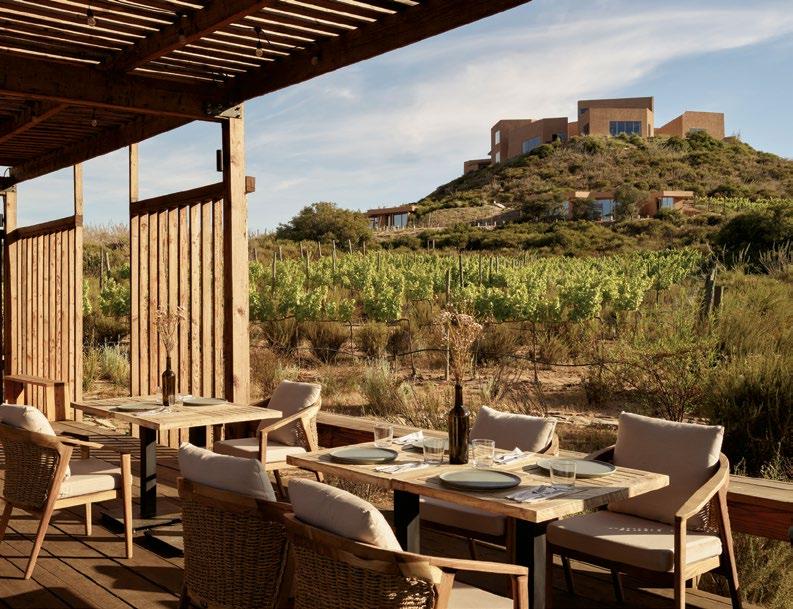
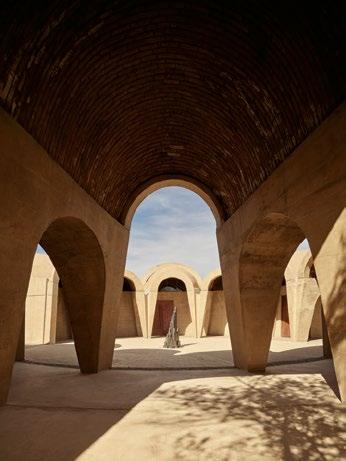
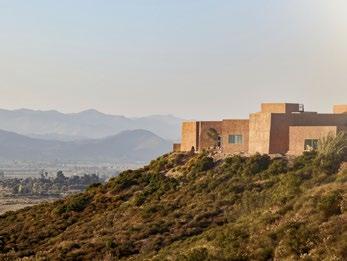
Long synonymous with vineyards and sun-drenched terroir, Baja California’s Valle de Guadalupe is entering a new chapter where wellness and design-led hospitality take center stage. At the heart of this shift is BANYAN TREE VEYA, a 16-acre sanctuary that opened in 2024.
Tucked into the hillside, 30 pool villas blend into the lush landscape. Each stay begins with a personal well-being assessment, followed by a tailored program drawn from the resort’s calendar of group activities, from somatic breathwork to a vibrational singing bowl experience. Led by a local Temazcalero, the Veya Temazcal Journey unfolds inside a steamfilled dome, where breathwork, chanting, and medicinal herbs guide you through a powerful release, leaving mind, body, and spirit renewed.
Seven dining concepts showcase the region’s bounty, including open-fire cooking at Jardín Botánico and Baja-inspired plates from the retrofitted Roka food truck. The property is also home to Pictograma — the only winery in the Americas dedicated exclusively to Grenache — with a focus on sustainable cultivation and small-batch production. veya.banyantree.com.
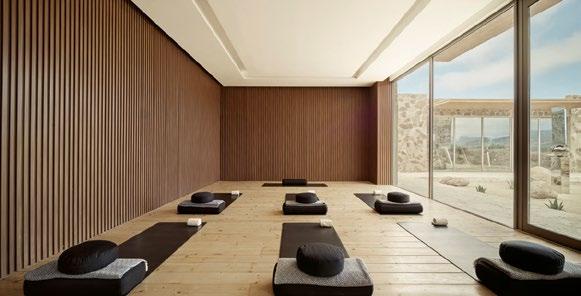
1. Jardín Botánico restaurant serves regional fare. 2. Pictograma Winery. 3. Valle de Guadalupe. 4. The Movement Room.
1.
MEXICO | BAJA CALIFORNIA
Banyan Tree Veya 2.
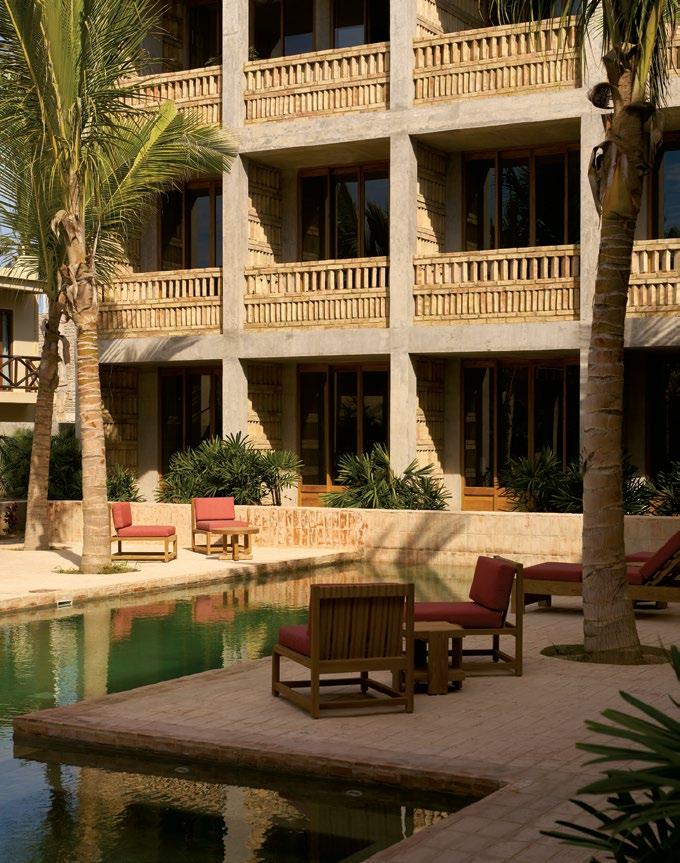



MEXICO | PUERTO ESCONDIDO Hotel Humano
Surf culture reigns supreme at HOTEL HUMANO, a 39-room destination just a stone’s throw from Zicatela Beach’s legendary breaks in Oaxaca’s Puerto Escondido. Opened in late 2024 by Grupo Habita, whose designdriven portfolio includes Baja Club Hotel and Condesa DF in Mexico City, the property embodies the laid-back, bohemian spirit the area is known for. Here, concrete, wood, and clay converge to emphasize the beauty of the hotel’s natural surrounds: think latticed facades that invite the outdoors in, and a welcoming, earthy palette that captures the shades of Oaxaca — sunsets included. Decked out in custom furnishings by Mexican artisans, accommodations range from Garden Pool Rooms, each with its own terrace, to the Ocean View Suites, outfitted with private plunge pools.
Spend the day catching waves (lessons and gear available at the on-site surf shop) or lounging by the palm tree–lined courtyard pool, then head to the rooftop Sunset Bar with a craft cocktail to watch the sun dip below the horizon. In the courtyard, Bistro serves alfresco meals, from chilaquiles and fresh juices at breakfast to mahi-mahi crudo and grilled fish by night. hotel-humano.com.
1. The hotel’s Brutalist exterior. 2. Rooms feature locally made furnishings. 3. Puerto Escondido’s golden sands. 4. Hotel Humano is designed to reflect the area’s surf culture.
2.
3.

MEXICO | RIVIERA NAYARIT
Rosewood Mandarina
Raising the bar for barefoot luxury in Mexico, ROSEWOOD MANDARINA made its long-awaited debut on Riviera Nayarit’s unspoiled Pacific coastline in May. Nearly a decade in the making, the resort encompasses jungle-covered mountains, agrarian flatlands, and white-sand beaches in a setting that’s equal parts nature, culture, and adventure. The 134 accommodations, including two private villas and three specialty suites, were crafted to evoke a deep sense of place. Each features a private plunge pool, a generous terrace, and custom design elements created in collaboration with local artisans, such as Barro Negro pottery, embroidery, beading, and yarn art.
Dining is just as immersive, from tacos, ceviche, and freshly caught seafood served at La Cocina Mandarina to Spanish coastal fare such as tapas and paella at Buena Onda. At the Asaya Spa, wellness takes center stage. Indigenous healing rituals inform a menu of nourishing treatments, including the Mara’akame Journey, a meditative massage designed to lead the body into peaceful slumber. With access to a Greg Norman–designed golf course and outdoor adventures like ziplining, surfing, and horseback riding, guests can make the most of the region’s diverse terrain. rosewoodhotels.com/en/mandarina



A speakeasy-style cliffside bar is set to open this fall.
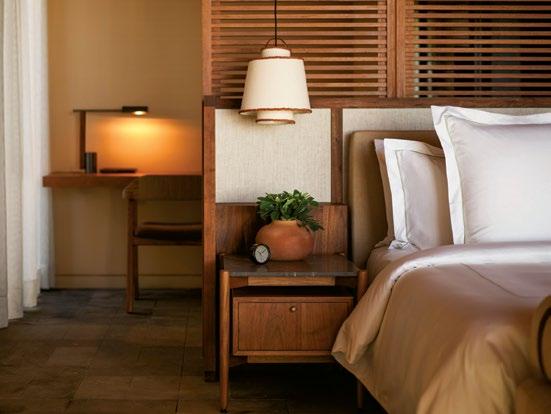
1. A rooftop studio suite. 2. Looking out onto the shores of Riviera Nayarit.
3. Poolside, overlooking Canalan Beach. 4. Inside a poolside villa.
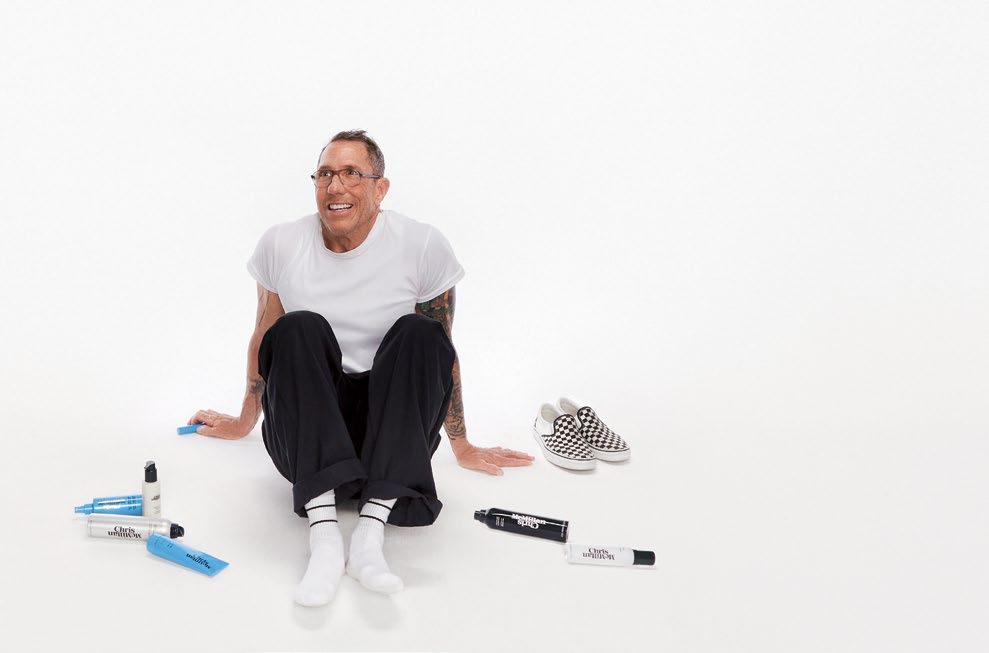
SUBTLE FLEX
Pilates has become more than a workout — it’s an identity. The hottest studios double as social clubs, with invite-only classes, wait lists, and price tags that rival private training. SCULPT CLUB in Studio City delivers the same high-design, Instagram-ready experience, minus the elitist barrier to entry. The airy, limestone-lined space with 12-foot ceilings feel like a private retreat, the kind of place you’re tempted to linger in long after class. The main attraction of the room is the Merrithew V2 Max Plus reformers, each with a sleek vertical tower. The tower adds versatility, unlocking new angles, stretches, and movements that keep classes dynamic and muscles guessing. Classes are small, community driven, and designed to leave clients stronger, longer, and more aligned. 12348 Ventura Blvd., Studio City; sculptclubco.com.
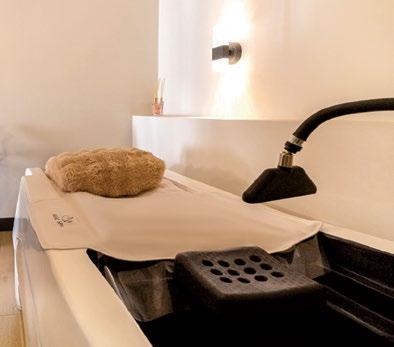
HEAD RUSH
SIGNATURE STYLE
CHRIS McMILLAN, the visionary hairstylist behind some of Hollywood’s most famous looks, has a curated collection of seven styling essentials designed to bring his signature touch into everyday routines. The collection is simple and functional, anchored by the products he uses every day, like the frizz-fighting Glassy Smooth Blowdry Spray, the versatile Styling Balm, and The Wand for quick flyaway fixes. Each formula is powered by the shine-boosting HS Complex, leaving hair strong, healthy looking, and never weighed down. At the heart of the line is McMillan’s lifelong mission: “I’ve spent my career helping people feel like the best version of themselves. Now, you can get that every single day.” chrismcmillan.com.

Once a niche ritual imported from Japan, the head spa is having its L.A. moment. M HEAD SPA ’s new location offers rainfall rinses, lymphatic scalp massages, and serene private rooms. Social media turned the head spa into a viral obsession, but the appeal goes beyond the ASMR factor, with clients seeking scalp wellness, glossy hair, and moments of stillness. “We want every visit to feel like hitting the reset button for your head and mind,” says founder Nanami Suzuki. “From the gentle treatments to our exclusive partnership with French scalp-care brand Hairfax, we combine deep relaxation with results you can see and feel.” For anyone craving a moment of calm without committing to a full spa day, this is it. 800 N. Fairfax Ave., L.A., 213-800-9999; mheadspa.com
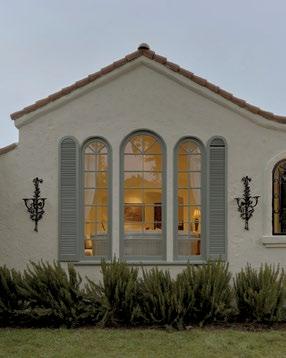
LAVENDER LIGHT
SPENCER’S, the boutique spa and wellness destination that was an instant hit in New York, has made its California debut in a house once owned by Sidney Poitier and inspired by summer escapes to the South of France. Says founder Ryan McCarthy, “I fell immediately in love with the afternoon light through paned windows, the smell of jasmine in the backyard, and the perfectly sized rooms in our charming house.”
The spa offers custom facials and massages, which blend Lomi Lomi, Swedish, Thai, and deep tissue techniques. 8815 Dorrington Ave., West Hollywood; spencers.spa.

BETTER BEING
Charles Rosier, cofounder of Augustinus Bader skin care, and Deepak Chopra will debut AB CHOPRA EPIGENETICS this fall. The membership-based platform unites AI-driven precision health, epigenetic science, and consciousness-based practices to deliver hyperpersonalized protocols that evolve into pathways for lasting well-being. At its core is the AI Wellbeing Twin, which adapts to each member’s biology insights, lifestyle, and goals to offer real-time, actionable insights, turning longevity into an exploration of human potential that’s as personal as it is scientific. abchopra.com
1. CHRIS McMULLAN has bottled his hair expertise. 2. SCULPT CLUB classes start at $35.
3. Treatments at M HEAD SPA begin at $148.
4. Book a massage from $149 at the Provenceinspired SPENCER’S. 5. Secure your AB CHOPRA EPIGENETICS membership from $150 per month.
6. Shop M.PH (from $25) for a perfect look.
HIGHLIGHT REEL
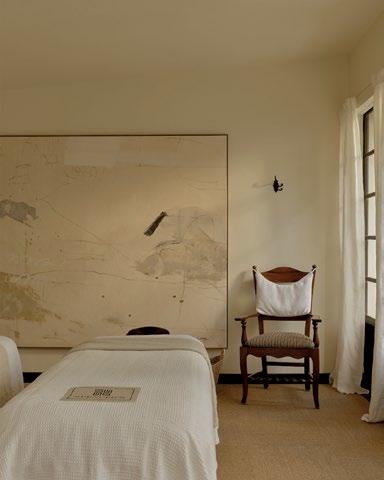
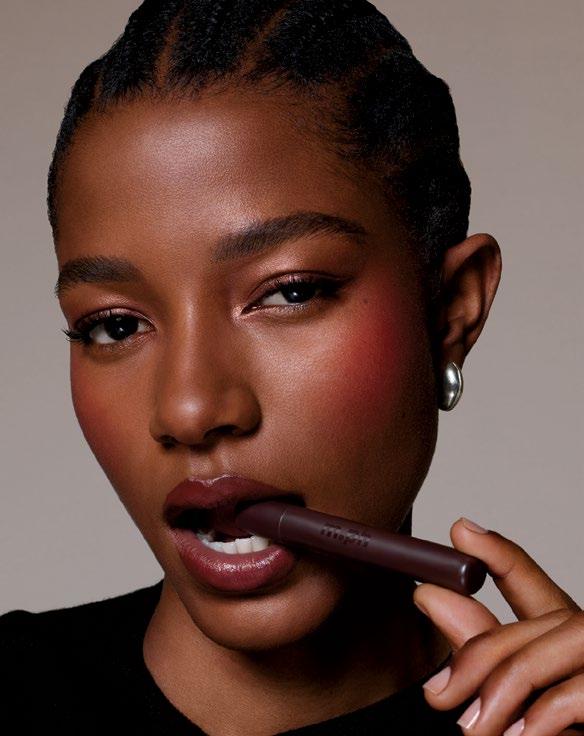

Two years ago, TikTok discovered Mary Phillips’s “underpainting” method — contour and highlight first, foundation after — and suddenly everyone was questioning everything they knew about applying makeup. Phillips has turned that phenomenon into the six-piece collection M.PH. The Underpainting Palette houses contour, highlighter, and color corrector for invisible structure; Cheeky Cream Blush sticks for a high-impact, soft-matte finish; Lip Ciggy lipsticks and Overline pencils finish the face with a soft, sculpted ease. The result is the coveted, snatchedbut-not-trying look, distilled into a tidy set of tools. mphbeauty.com.

Reset Mode
new hotel near JOSHUA TREE trades excess for elemental design and a slower pace
From a distance, THE RESET HOTEL could almost pass for a particularly well-situated storage facility. The rooms look like shipping containers — modular, neatly aligned, and matte against the mountains. Step closer, though, and the understatement reveals itself as intent: architecture that blends into the desert rather than competing with it. Cofounded by Adam Wininger, Shannon Ching, Sumeet Parekh, and designer Ben Uyeda, The Reset isn’t just a hotel; it’s a mindset. With 65 design-forward rooms, each featuring a private patio, Solo Stove fire pit, and Flamingo Estate bath products, the property is minimalist and self-assured. There are no TVs and disposable plastics, and there’s no velvet-rope energy. Instead, expect curated stillness and the occasional DJ by the saltwater pool. Uyeda calls it “infrastructure that lets nature take center stage.” His vision is a reductive yet expressive blend of raw materials, soft desert palettes, and statement-making pieces, many crafted by local artisans. The same philosophy extends to the menu: Split Rock Cafe and Bar delivers seasonal, ingredient-driven fare, including pop-ups with visiting chefs and intimate dinners. 7000 Split Rock Ave., Twentynine Palms, 760-362-6100; stayreset.com.

for a desert getaway










Continued from page 74
The Byrne Identity
emotional performance,” Bronstein says. “That’s a rare thing.”
Despite the implied heaviness of working on an existential horror project like Legs, comedy is harder, Byrne insists. “It’s like lightning in a bottle. There’s nothing like the satisfaction of getting a laugh from people, I find.” Drama certainly has its challenges (she and Cannavale wowed Broadway with their modern-day Medea with Byrne in the title role), but “to make someone cry is less subjective because something is just objectively sad. Right? Name it, like that is sad. Something funny? Way harder, way more subjective.”
Having tackled all manner of genres, I ask whether there is anything new she’s particularly excited about trying next. She mentions Fallen Angels, a Noël Coward play that opened on London’s West End 100 years ago and premieres on Broadway in the new year. It’s a fizzy romp with Tony winner Kelli O’Hara sharing the top billing. A social satire about sexual dalliances of the British upper class in the 1920s may be a new tone for Byrne, but a familiar challenge: “There’s just nothing like trying to get a laugh,” she says, bursting out into a peal of her own. X
Continued from page 102
Style Allies
don’t know? Because it’s like I’m missing that business gene. I got all the creative genes, but I didn’t get that gene.
TB: Johnson, we just approached what we do differently. I went about my collection in the very old-fashioned way: doing collections, paying for them, spending to build a business that could become what it has become. Johnson was a pure entrepreneur in how he approached his collection. He has, I think, done it better than anybody.
JH: Thank you, Thommy.
TB: And also, I almost went out of business around 2009.
JH: I guess we didn’t talk about business because I wasn’t even aware that all was happening — which, looking back, makes me feel like I was a remiss friend. But fashion and business are not what we talk about when we’re together.
C: What was a really surprising moment in your relationship?
JH: Something that has surprised me is that
“Something that has surprised me is that since Thom has gotten so rich, I haven’t gotten any of the perks. I haven’t had one week on a yacht. Nothing.” JH
since Thom has gotten so rich, I haven’t gotten any of the perks. I haven’t had one week on a yacht. Nothing.
Oh, another cute anecdote — please put this in print — is that as Thom and I were starting out we made a vow and a promise with blood that whoever ended up doing better in this business would take care of the other. So the day I heard that Thom had sold his company, I called him and said, “What the fuck? Can I retire?” And he said, “Yes, you can, but not for 10 years. And we’re about year seven.”
C: Do you have any reflections on what this friendship means, to have someone who’s been a support for that long?
TB: It’s nice to have the comfort in a friendship like this.
JH: A throughline that we had, one that’s incredibly sad, is that both our mothers got dementia at about the same time.
C: I’m sorry.
JH: It was nice to also have each other to reflect on that. It’s just as Thom said, and as I said, it’s just a constant. I know that I could call Thom and it wouldn’t be any different than it was the day I met him.
TB: The same, Johnson. You’re the same too.
JH: Thank you. And so I think we’re just there. We’re just there. We’re always there. X
Continued from page 113
North of Eden
not gatekeep it,” she says. “Our mentality is that if one of us does good, we all do good.”
No matter whom you speak to in Carmel Valley Village, the subject of community is top of mind. Locals are excited about Hacienda, an animal-feed store that has started hosting
line-dancing parties and bingo nights with food and drinks to help connect neighbors. And transplants and longtime residents alike try to support growers and makers who embody the Valley’s values, like Mary Ellen and Bill Parsons.
The couple owns Parsonage Winery and lives on land with 6,000 vines just a few minutes down the road from their cheerful but elegant tasting room. They produced their first small batch of wine in 2000. Since then, they’ve earned a stellar reputation for their big, bold reds, like a velvety Syrah that ages in French oak barrels inside a barn. They run the family business with help from their three daughters, two sons-in-law (including winemaker Frank Melicia), and six grandsons, whose faces you can see smiling in family photos on the tasting room wall.
“It’s incredibly hard work, so I can’t tell how much the younger boys love [it],” Mary Ellen says with a smile. “But we’re still going.”
“It’s a real family operation and super hands-on,” Melicia adds. “When you’re trying to compete with everybody in the business, you have to produce the best possible grapes, and ours are spectacular. People forget that this job is 95 percent farming. We make wine for a threemonth period. But today, for instance, our middle son is out there raking under the vines all day in the hot sun.”
Melicia says they “absolutely need” tourists to help support local purveyors and that most of their customers are introduced to their label through the tasting room. “It’s a certain kind of person who really appreciates the family story, that we’re a small winery with three generations working to make it happen,” he says.
Mary Ellen is a self-taught quilter, and images of her work grace the labels of the wine bottles. The quilts hang on the tasting room’s walls. She sells them but says it’s hard to put a price tag on the months of labor required to produce one. Sipping the beautiful Parsonage wine, chatting with Mary Ellen about her art and her family, and soaking in the unfiltered summer sunshine and the cool breeze, one can feel entirely at home in this place. It’s easy to understand why people who come here are reluctant to leave.
“People came here because they wanted to live in utopia, and they found it. It used to be that no one knew it was here. But we’re just out here in the sunshine, a short drive away from the fog. Please come see us,” Melicia says. “Just don’t honk your horn.” X
Cyndi Lauper
How the Rock & Roll Hall of Fame inductee adds calm — and color — to her routine
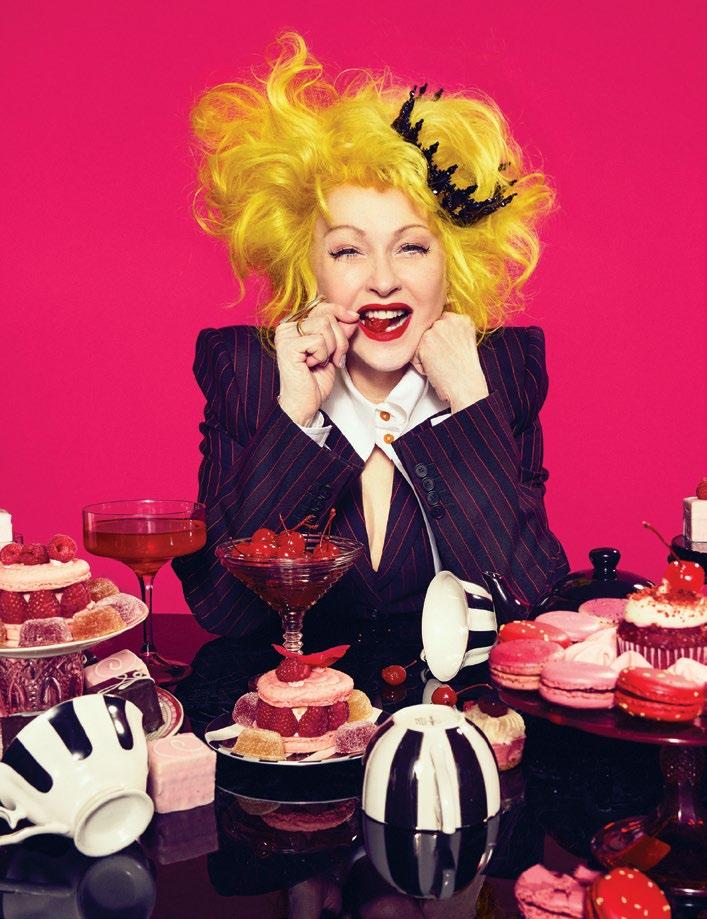
WHERE DO YOU LIVE? New York City.
FAVORITE HOTEL?
Sunset Marquis in Los Angeles. I love it because it’s a special place with a lot of rock and roll history and it’s also a little off the beaten path. I recently stayed at Patina Osaka when I was on tour in Japan, and it’s now my favorite international hotel.
FAVORITE HEALTH FOOD?
When I’m on tour I need my Throat Coat tea and a simple PB&J on gluten-free bread. I also love sushi; my favorite is Sushi Park in West Hollywood.
FAVORITE HIKE?
You gotta keep moving! I love Griffith Park and the Griffith Observatory. And my husband and I love walking in Central Park. It’s so peaceful, and there
are so many things to see. There’s great people watching, great energy, great music and activity.
WHERE DO YOU FEEL MOST ZEN? In my apartment.
FAVORITE BEACH?
Coney Island. I like the sights, the smells, the action. It’s not very Zen, but it is very New York. I also love the Jersey Shore. You’re right near everything, but it can also be very tranquil.
FAVORITE RELAXING GETAWAY?
I love taking a drive on PCH, which is awesome. I also love a staycation. I am lucky that I get to travel so much for work, but being home is the best way for me to relax. When I do travel for vacation, we keep busy visiting museums and sightseeing. I haven’t done a relaxing getaway in a while, but maybe I can put it on my to-do list.
WHERE DO YOU TAKE VISITING FRIENDS?
I love taking friends to Lemmy’s Lounge and Rainbow Bar & Grill on the Sunset Strip. Lemmy was a friend.
FAVORITE COMFORT FOOD? Cannoli from the Cannoli King in New York’s Little Italy.
FAVORITE SKIN CARE?
Tracie Martyn, especially the LotuSculpt Activator Peptide Water.
FAVORITE HAIR PRODUCTS?
Manic Panic. I like to change my hair color a lot.
WHAT DO YOU WEAR TO RELAX?
Pajamas. All kinds of pajamas.
WHAT DO YOU WEAR TO WORK OUT? Nothing fancy — yoga pants and a T-shirt.
FAVORITE HOME ITEMS? My faves are things I’ve collected during my travels, art, and kitschy kitchen stuff.
FAVORITE FLOWER?
Gardenias. The smell is so calming to me.
WHAT BOOK ARE YOU READING? How to Write a Funny Speech by Carol Leifer.
FAVORITE MUSIC TO HELP YOU RELAX? Anything by Joni Mitchell.
FAVORITE PODCAST?
SmartLess. The guys are smart and funny — a killer combination.
WHAT’S YOUR MANTRA? Never let the bastards grind you down. •
CYNDI LAUPER
